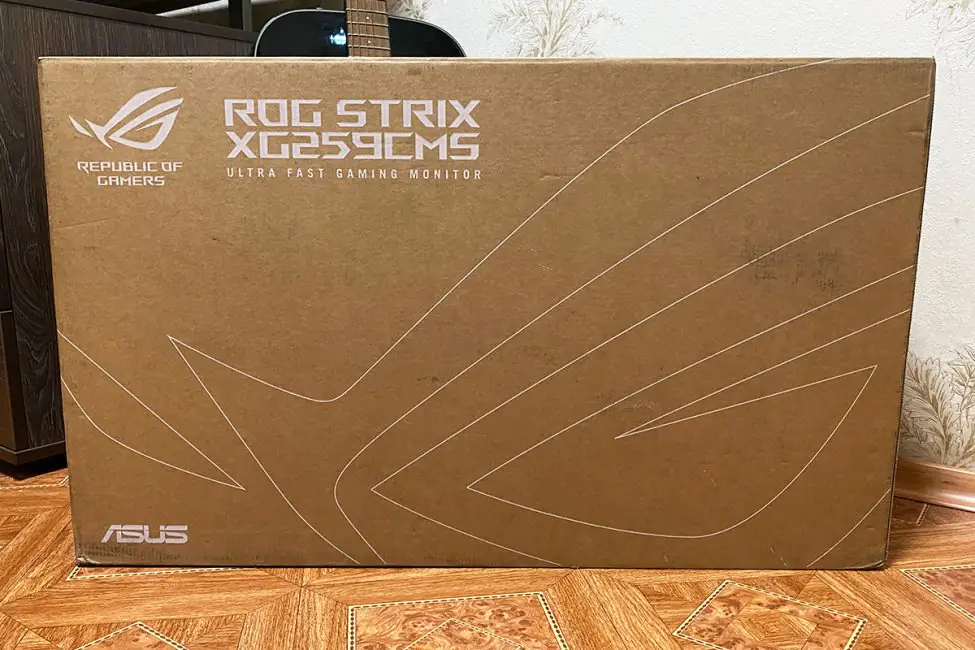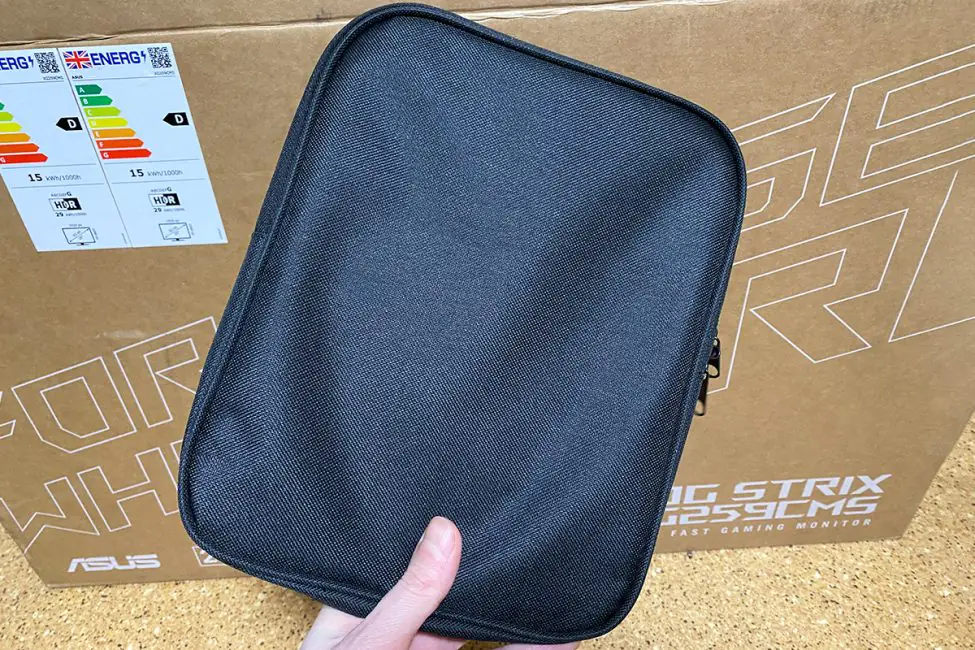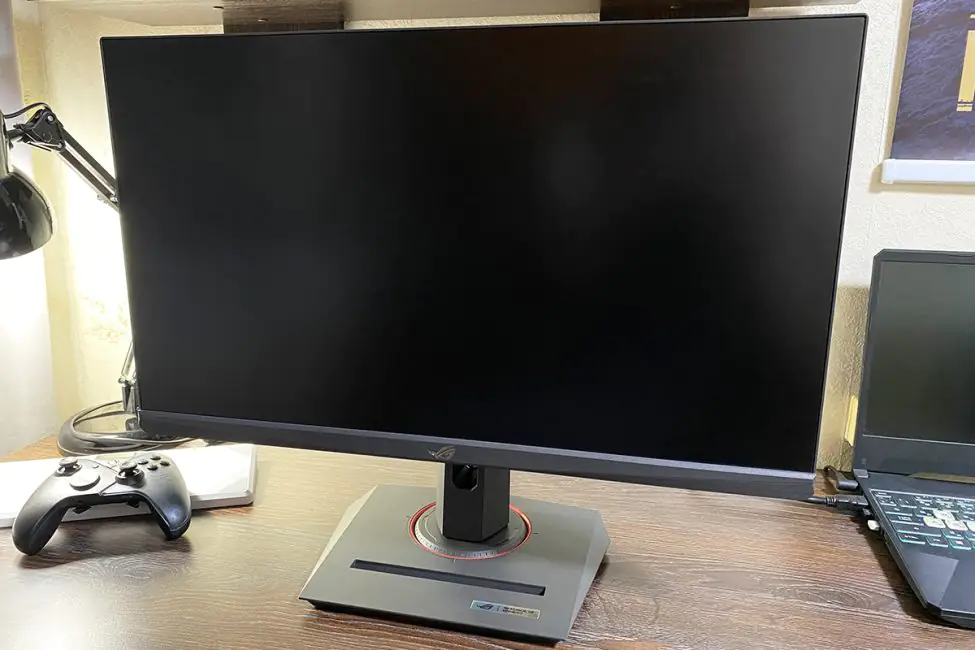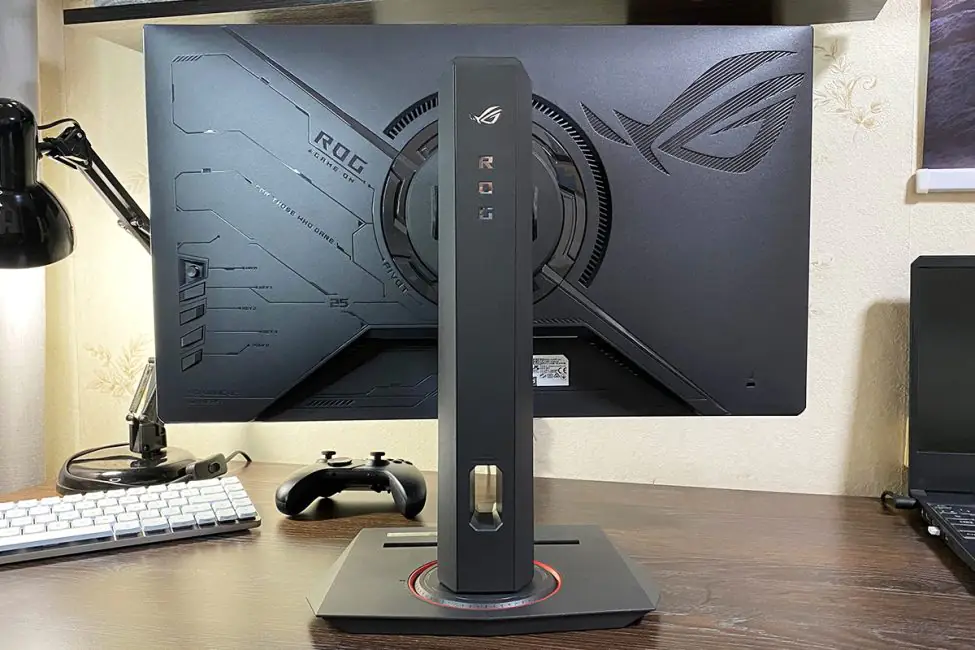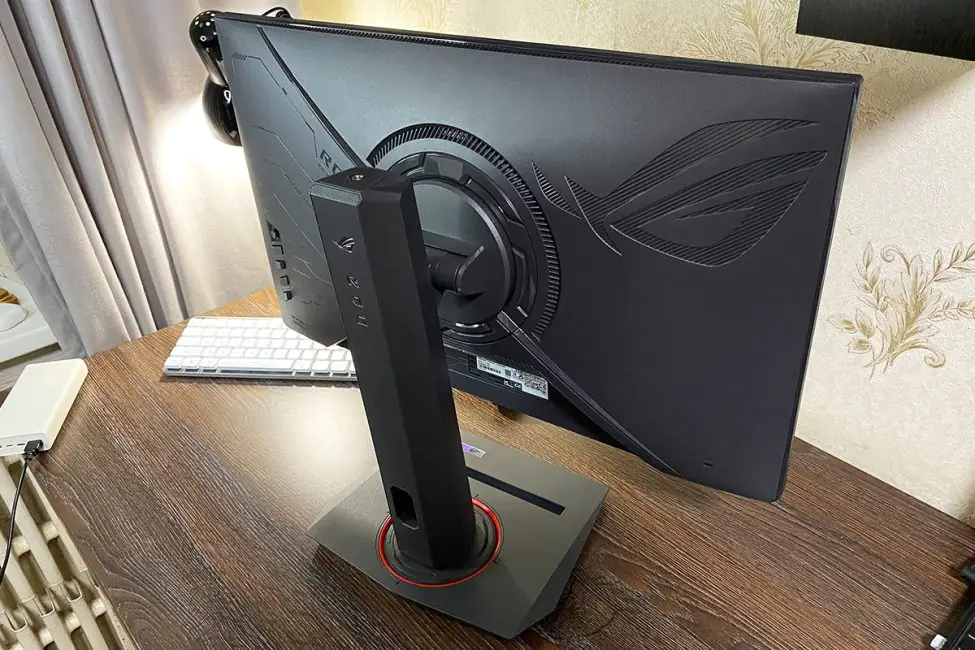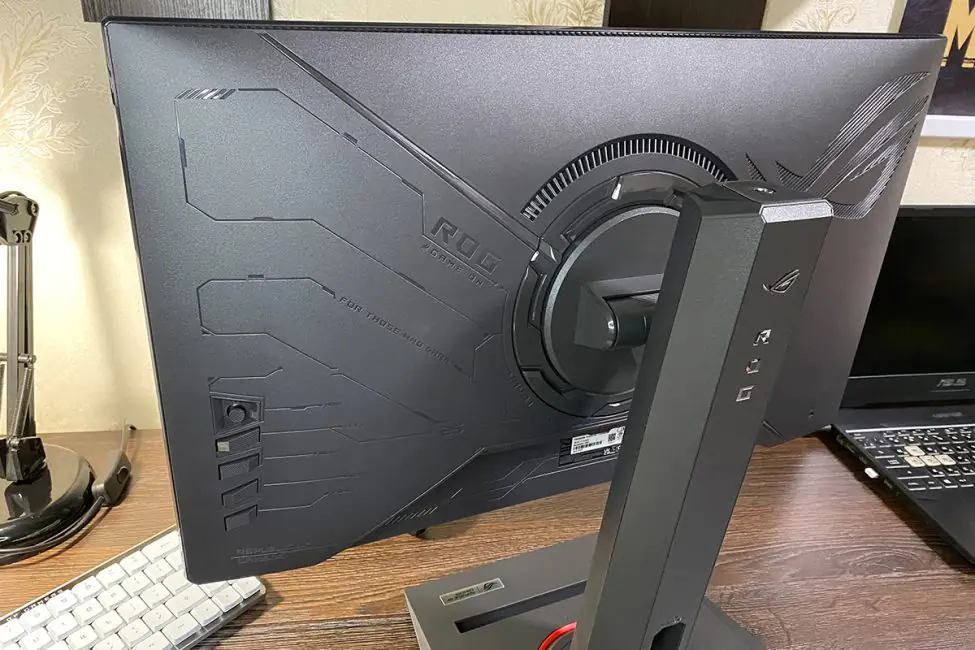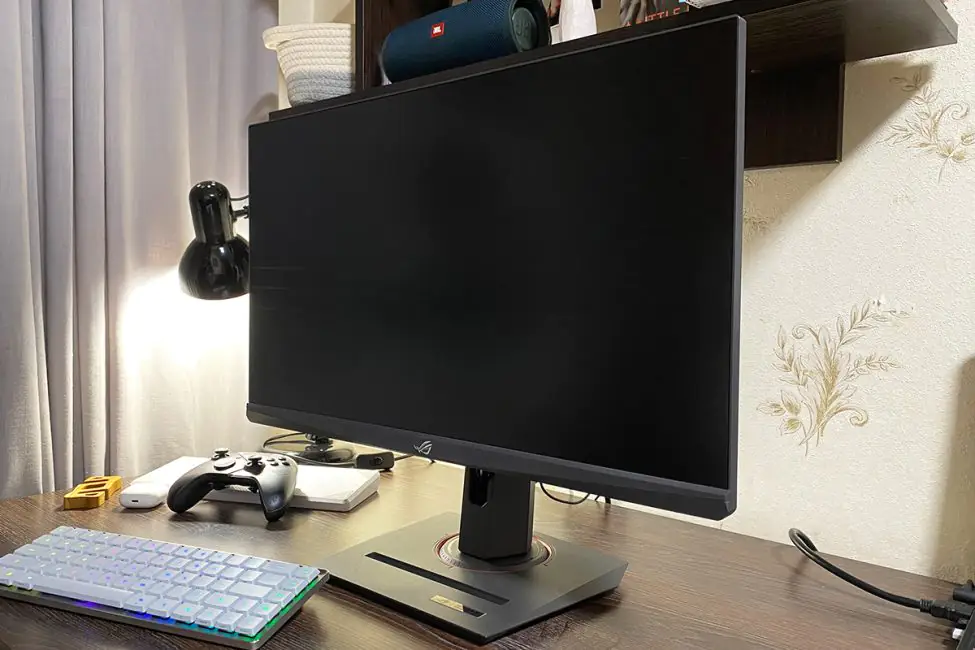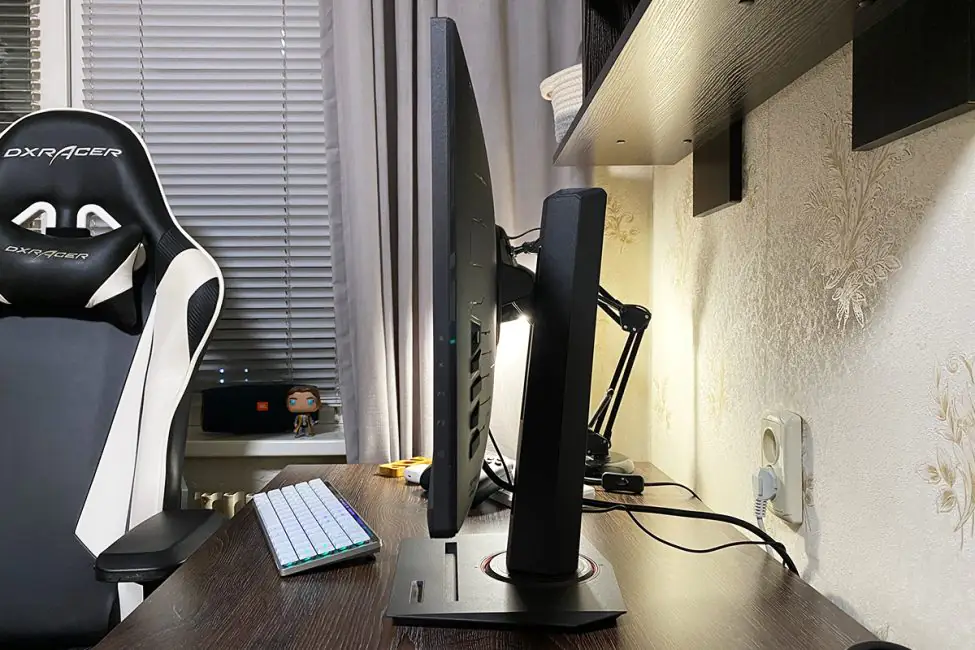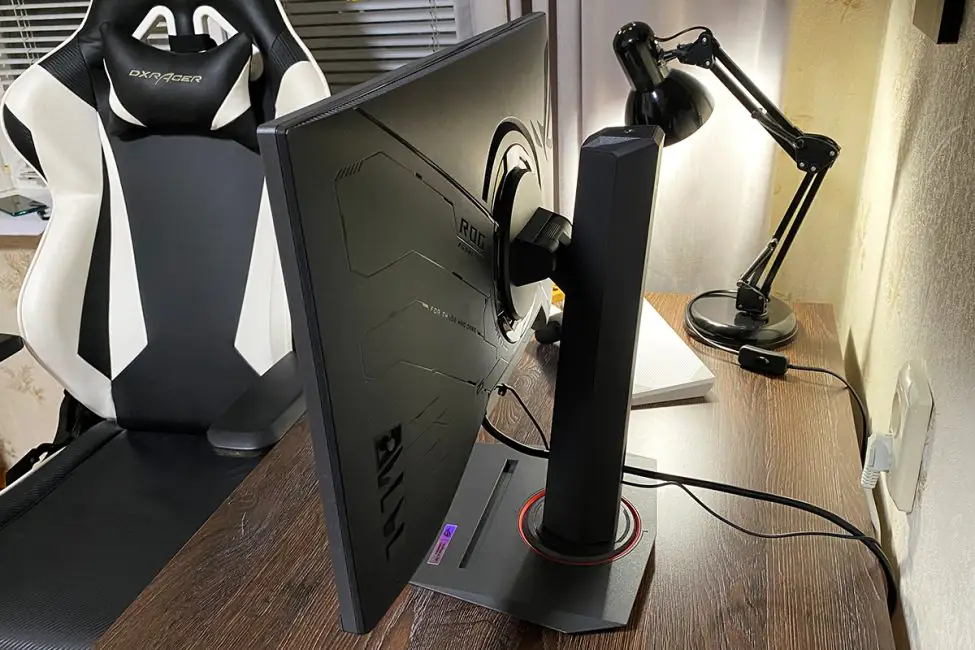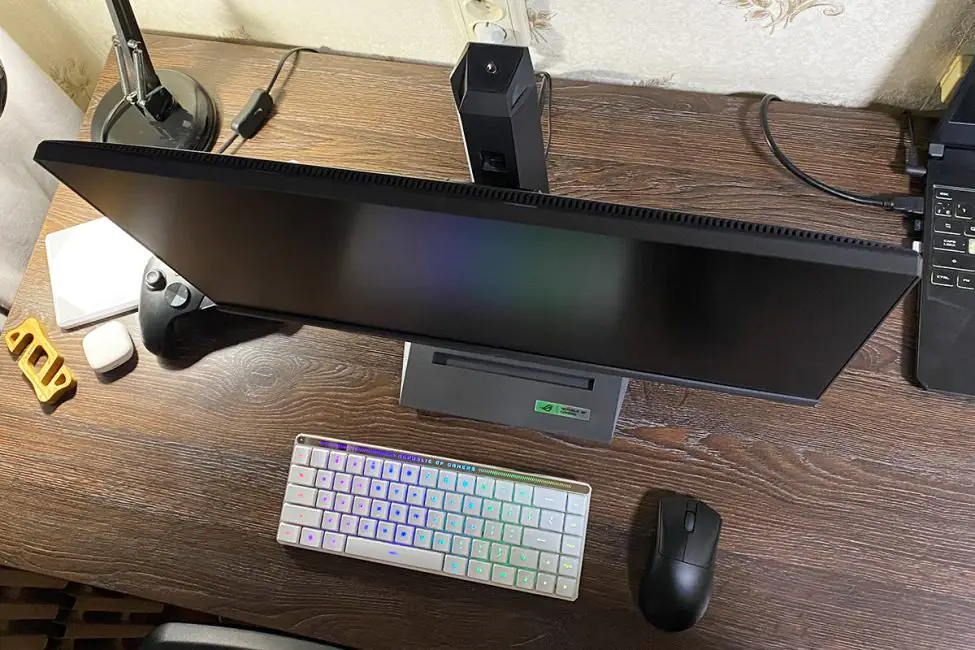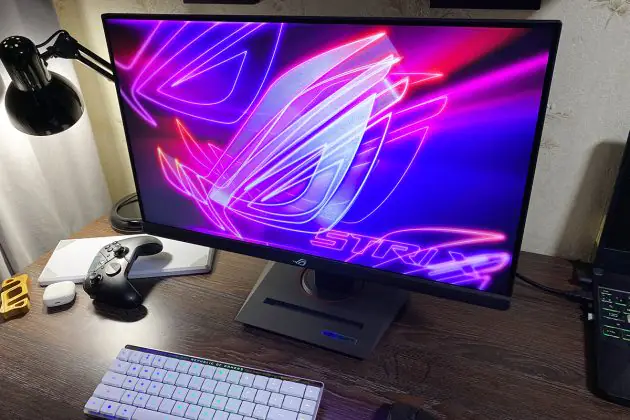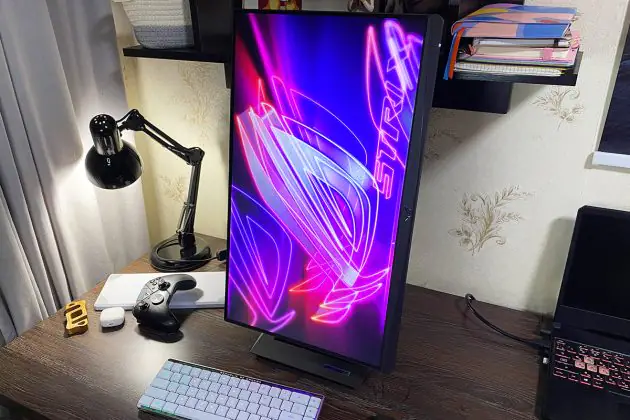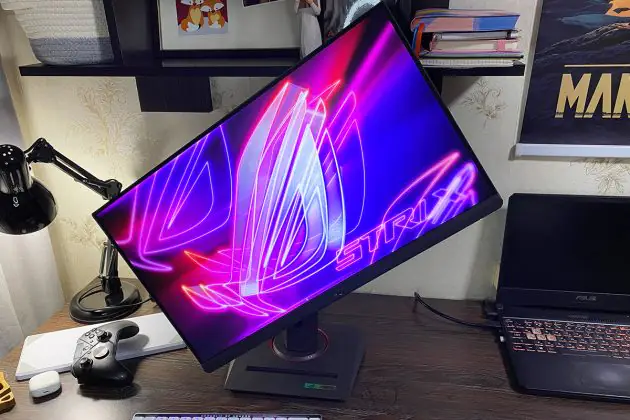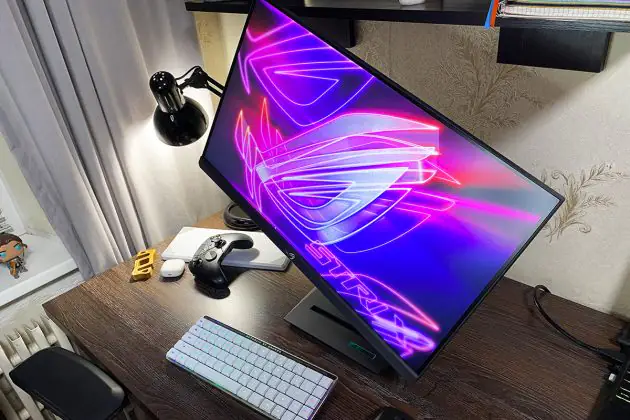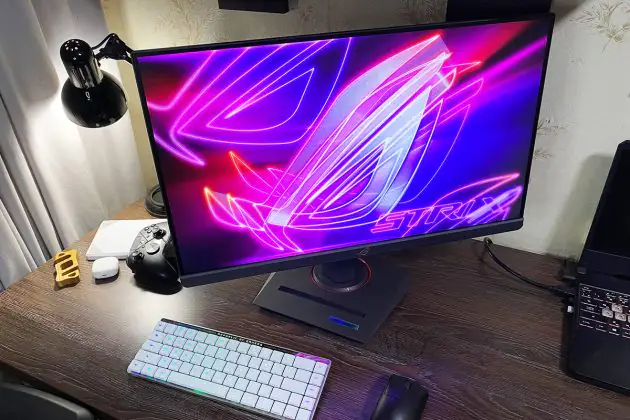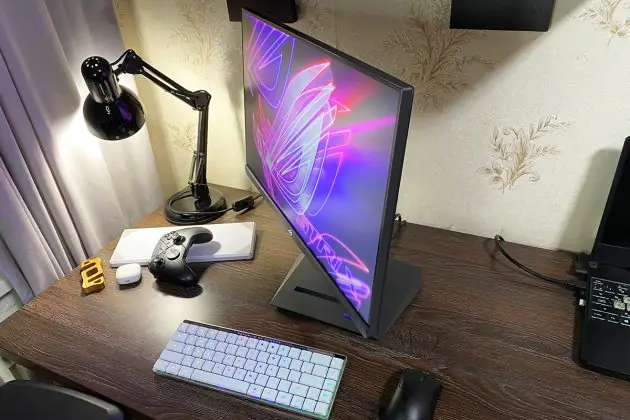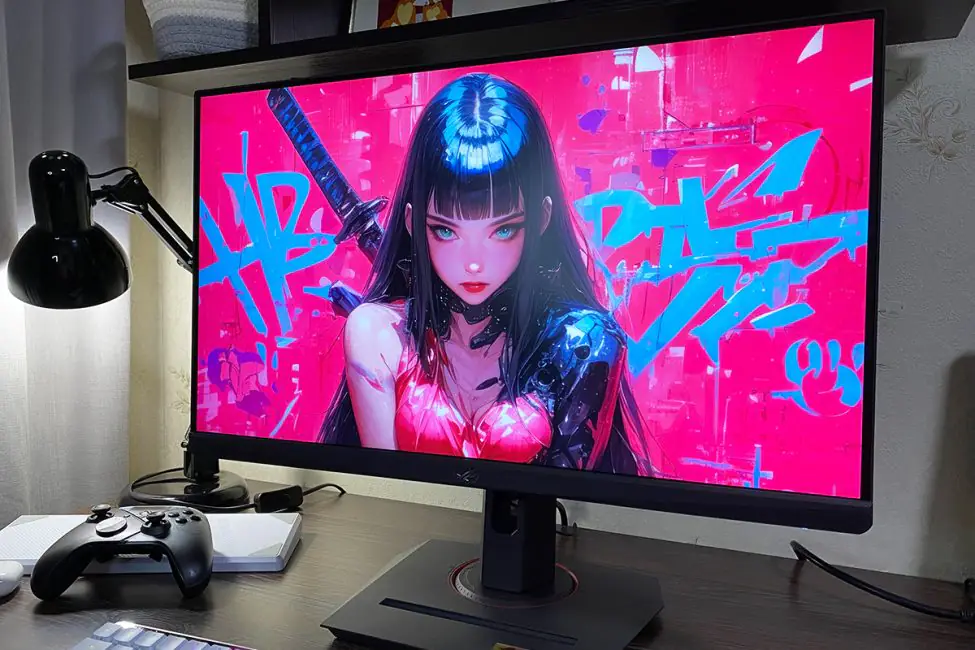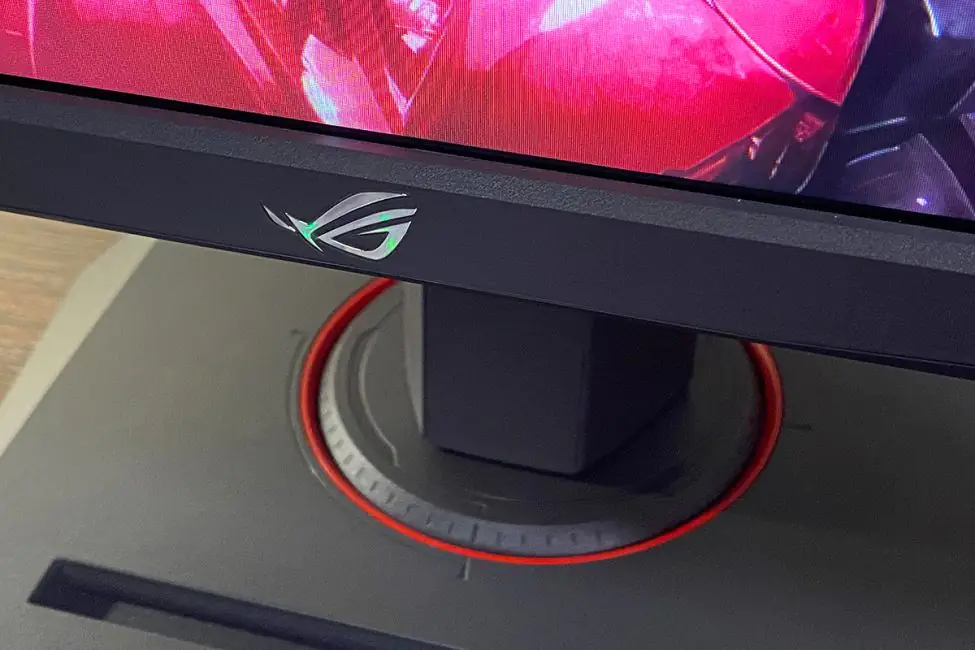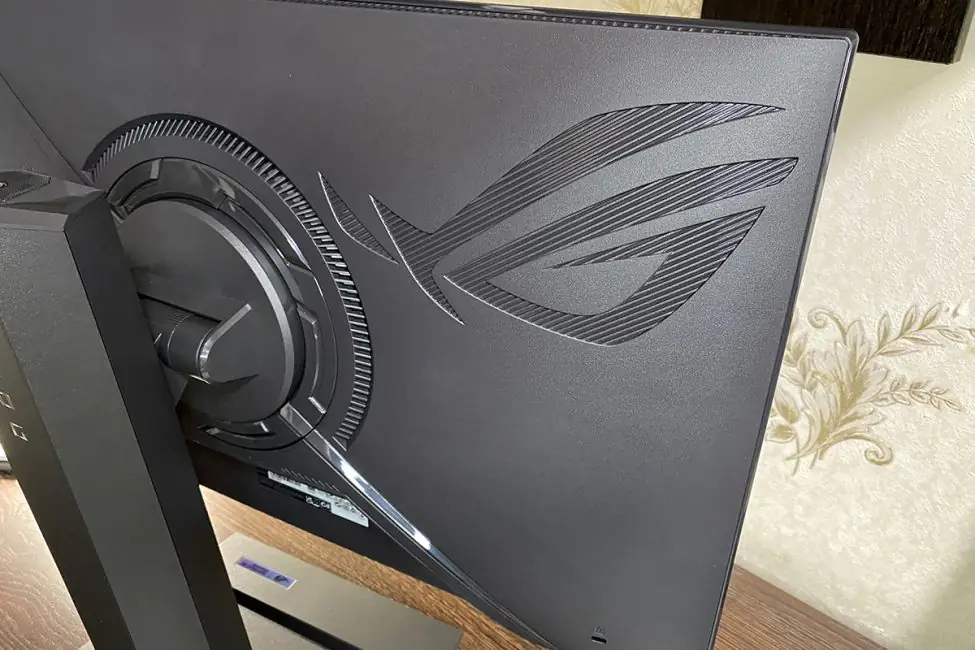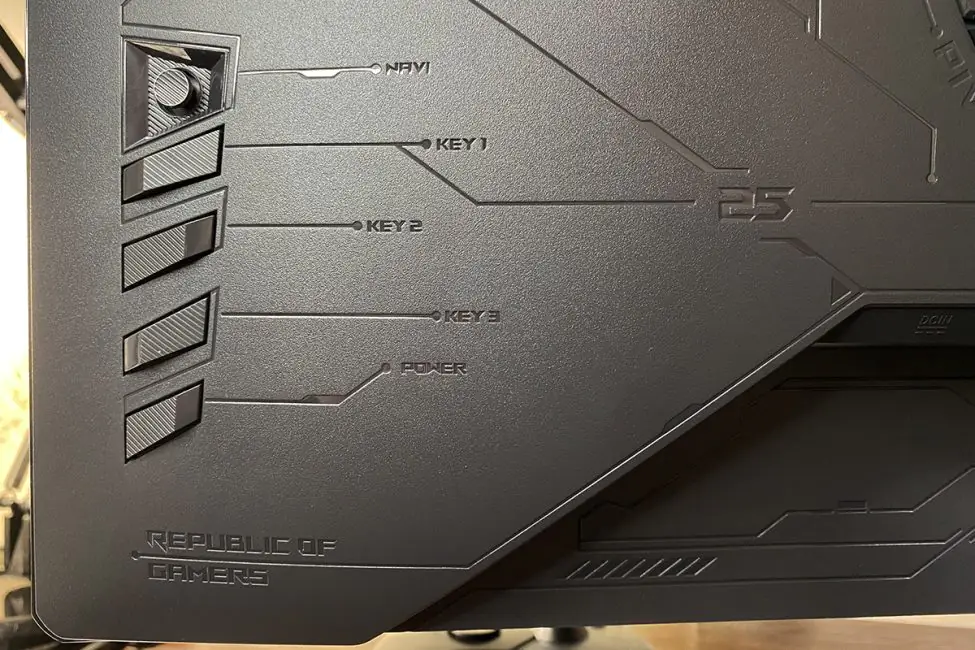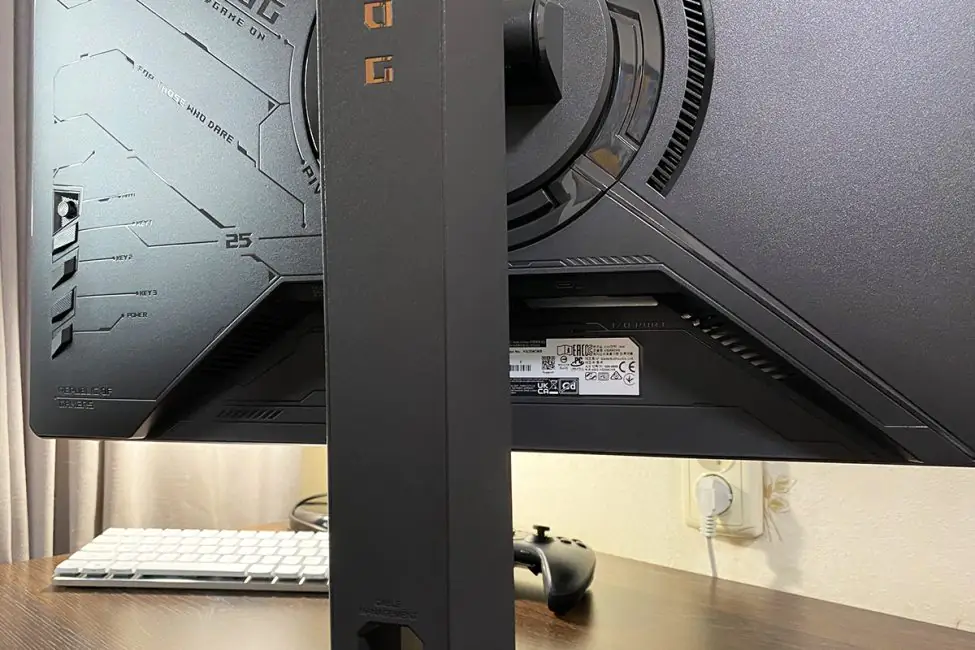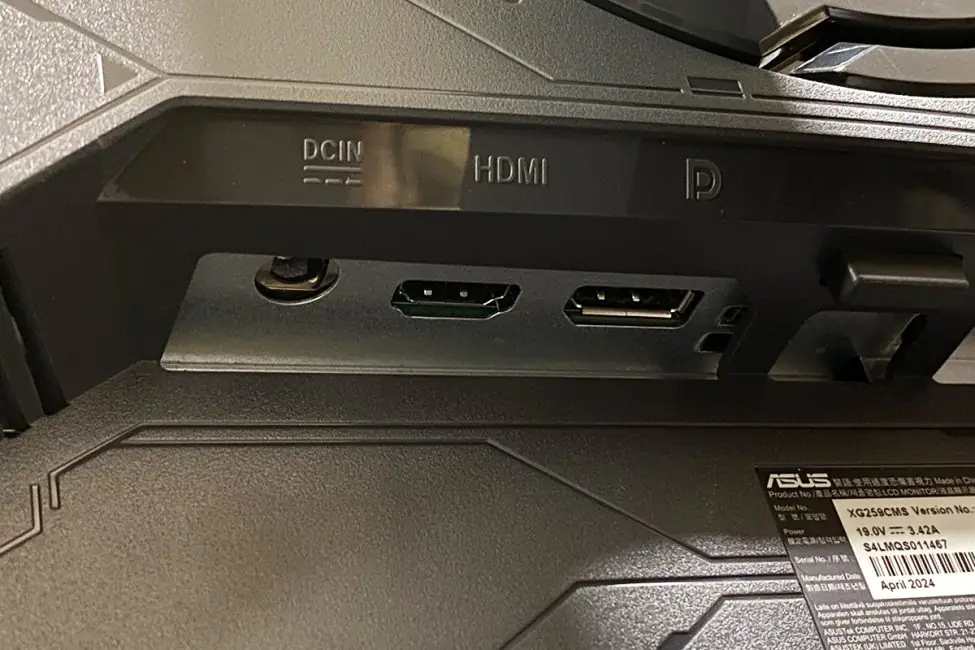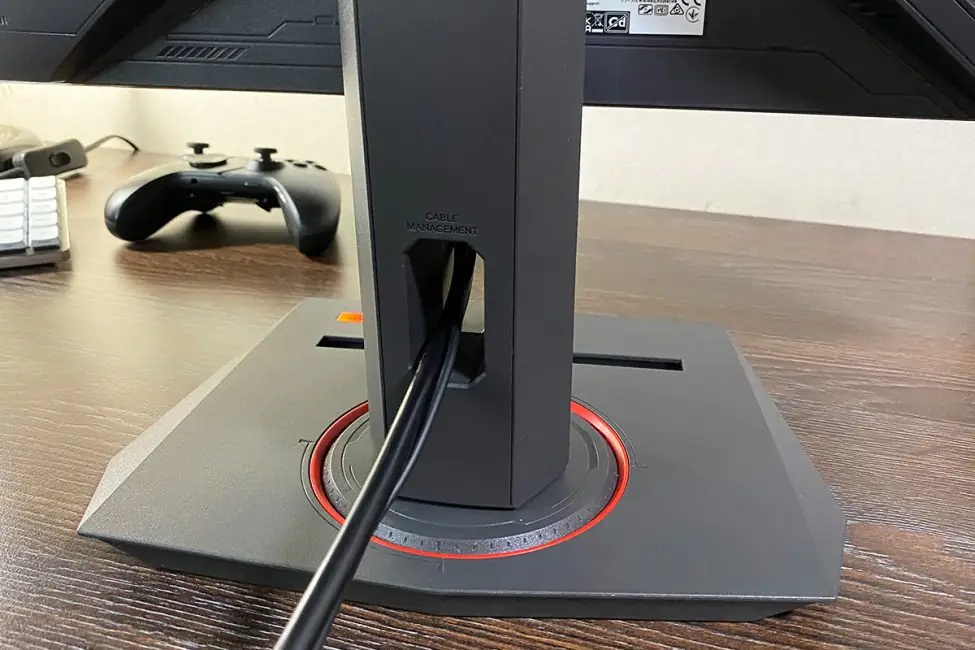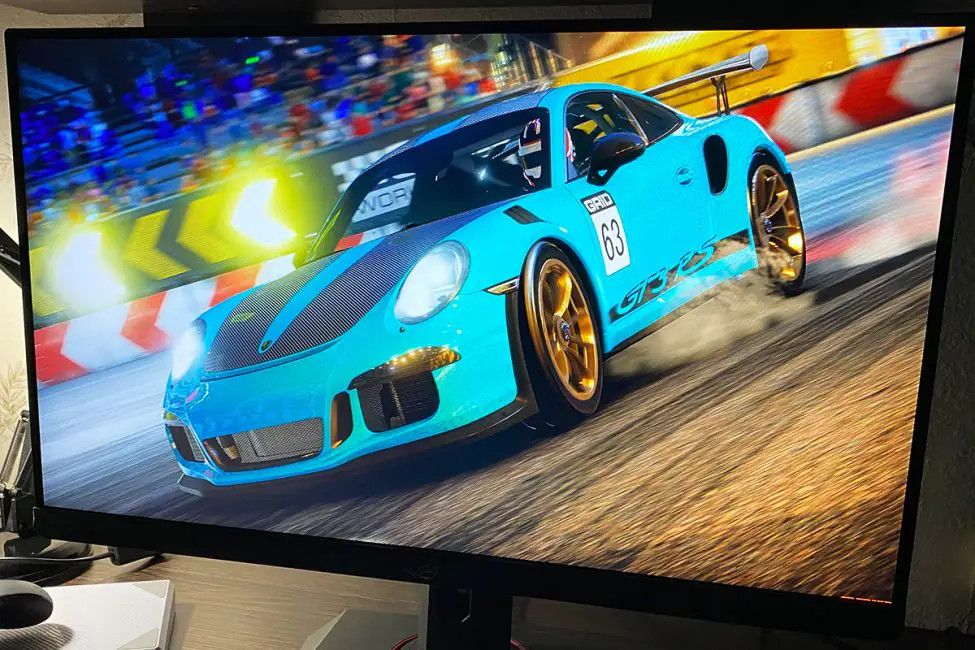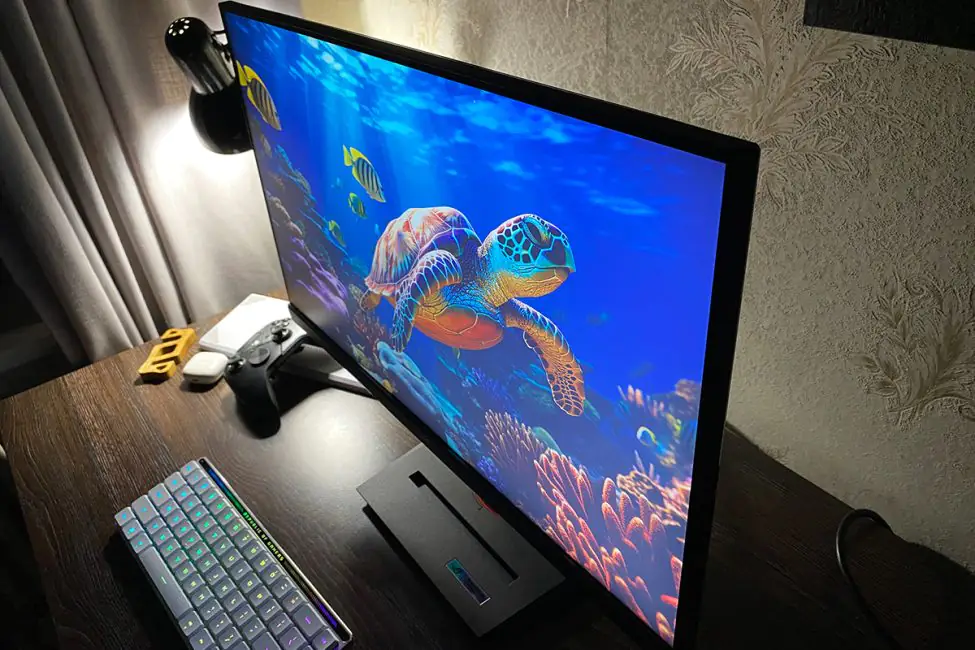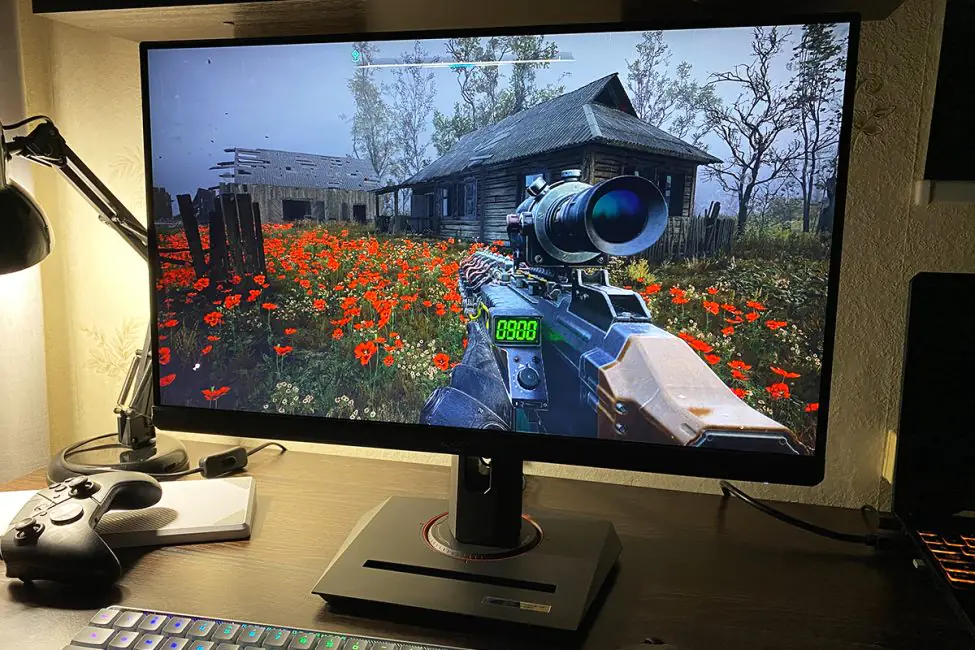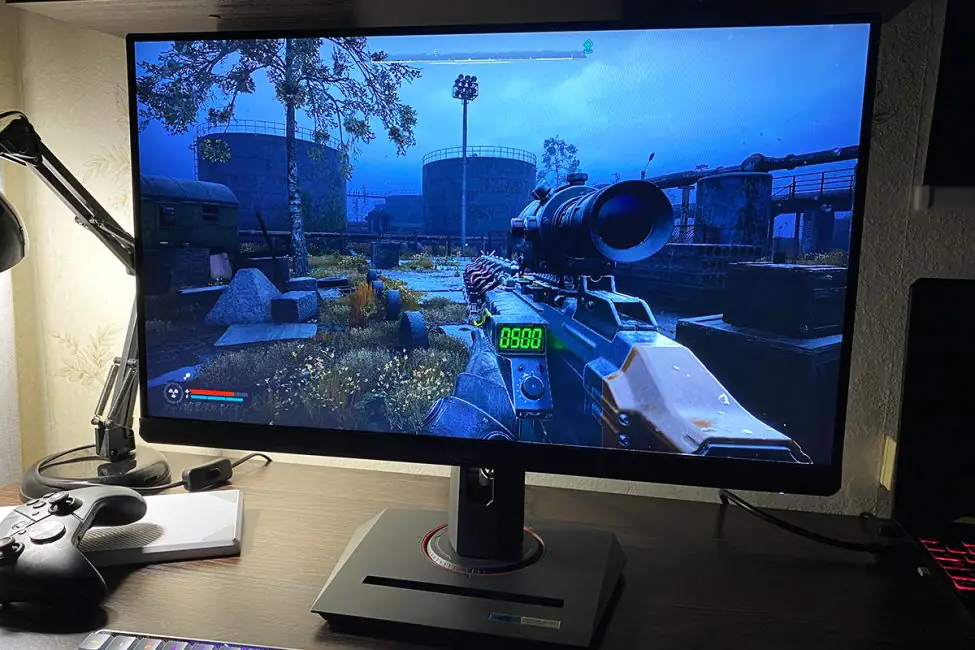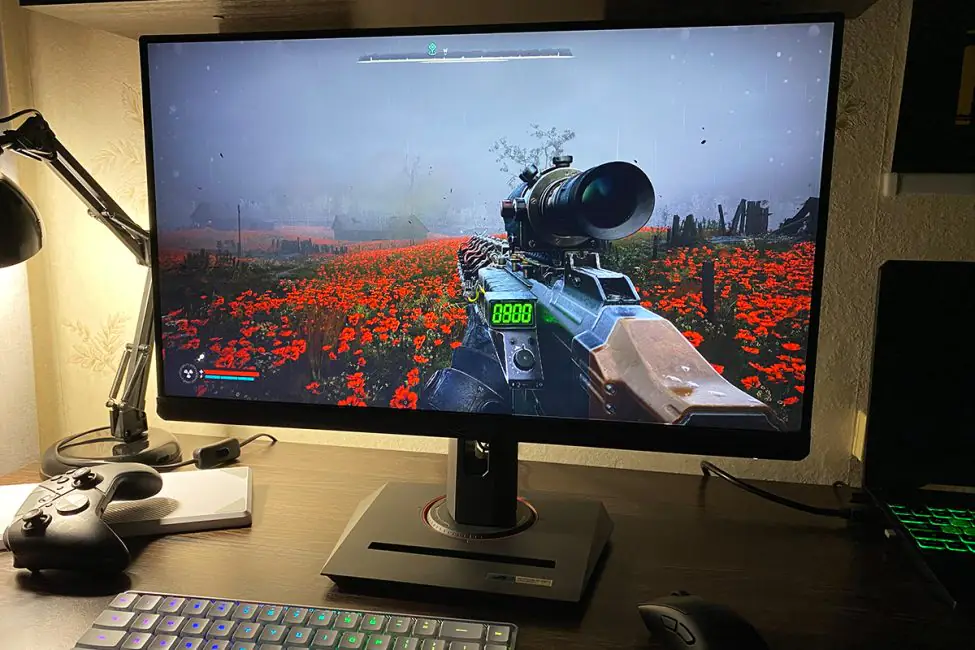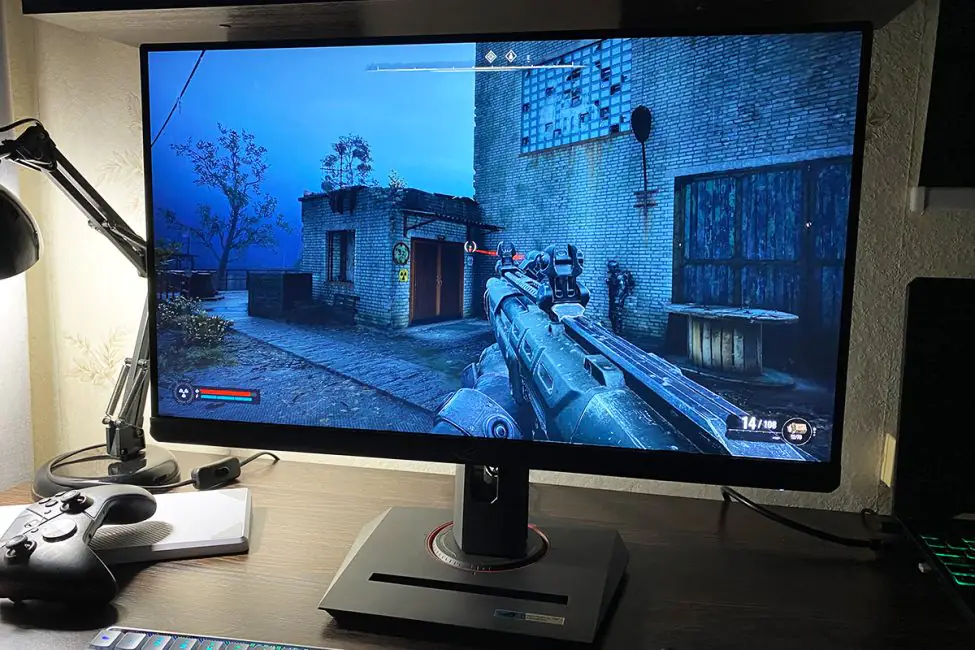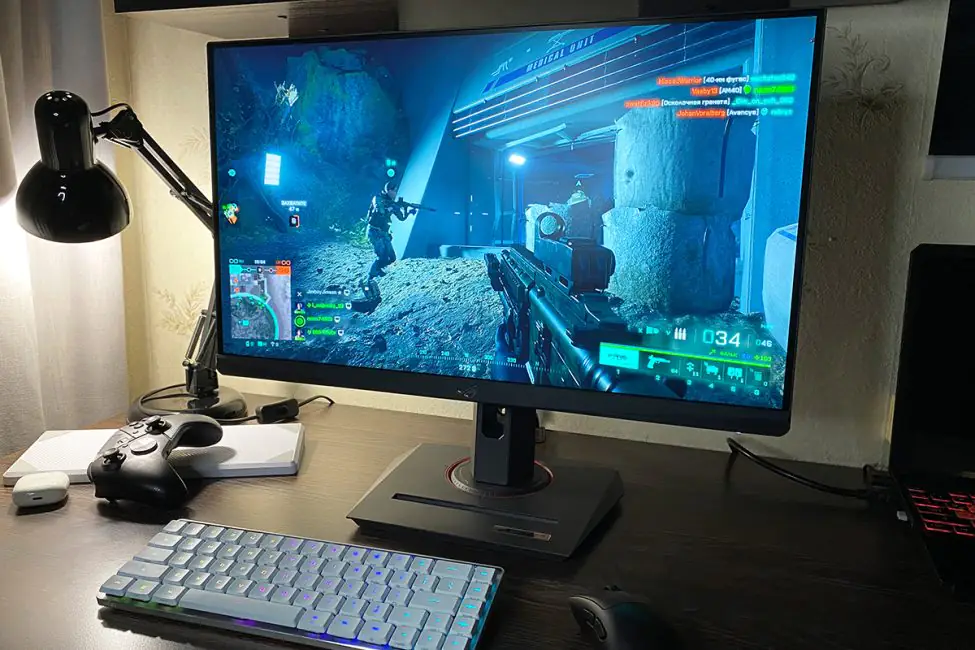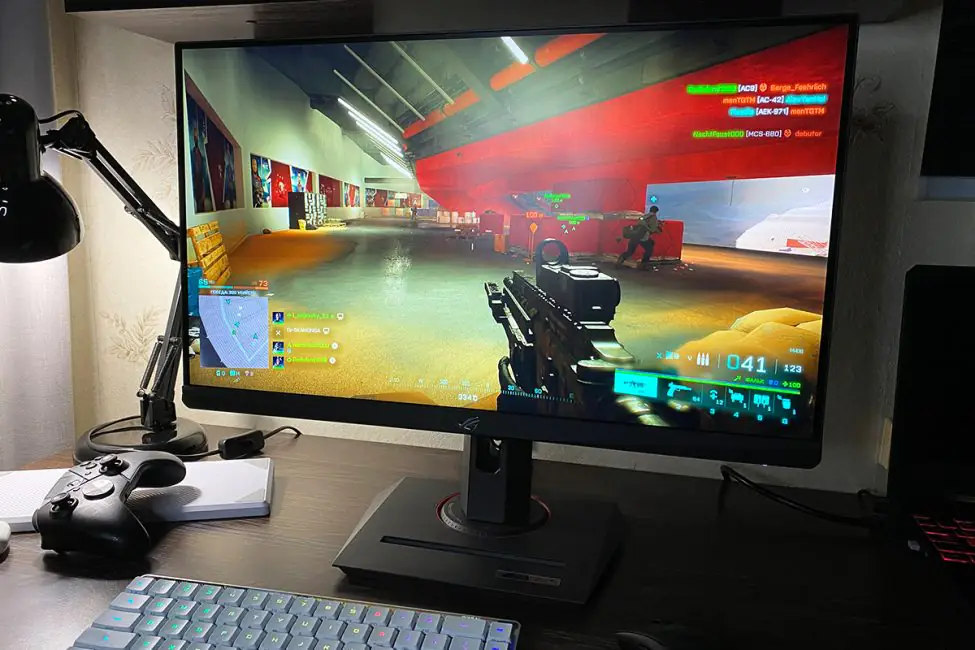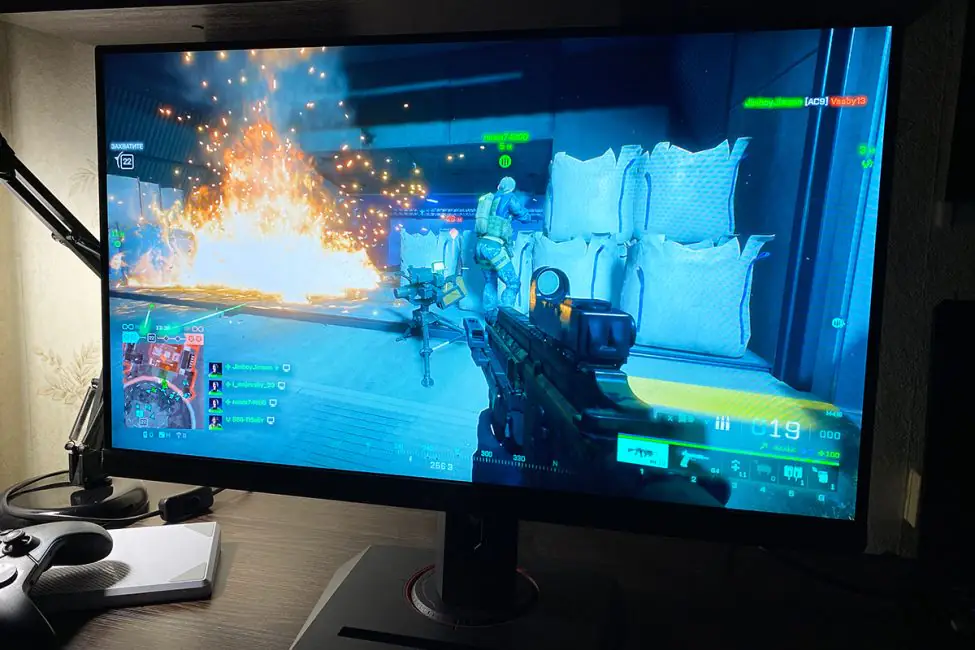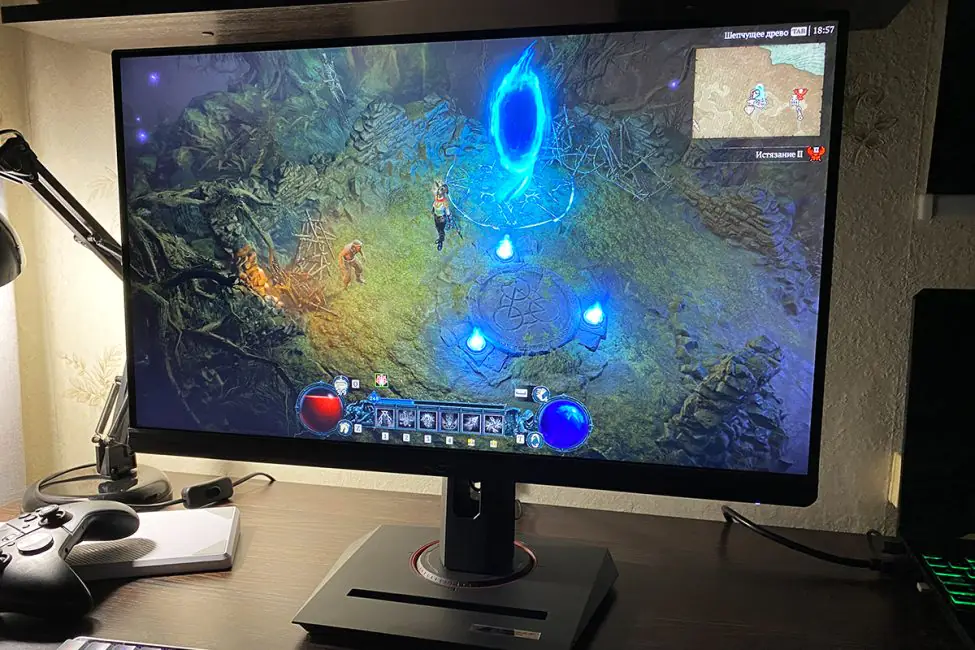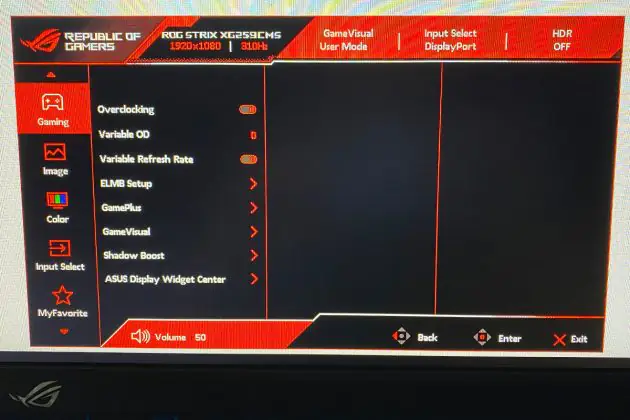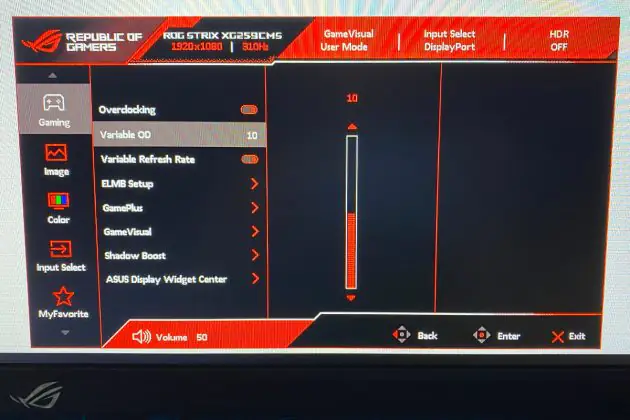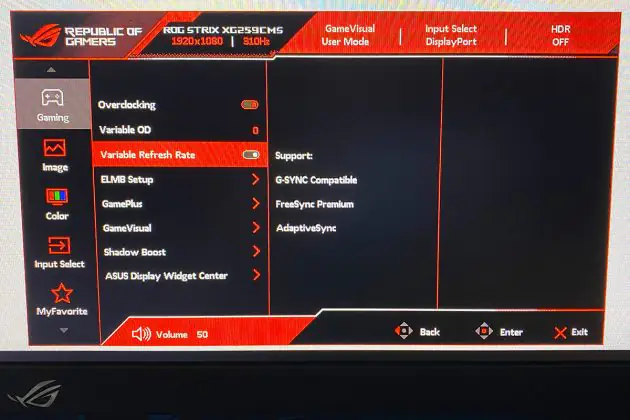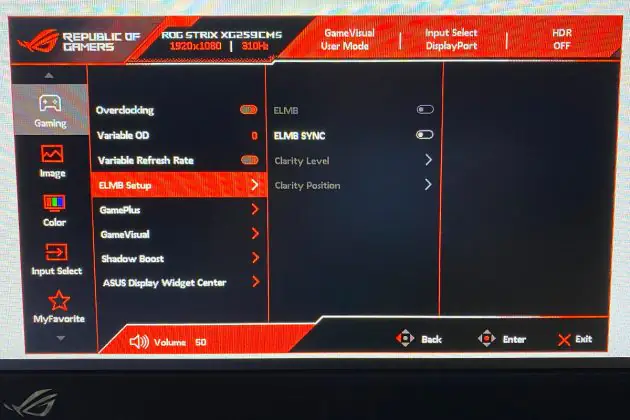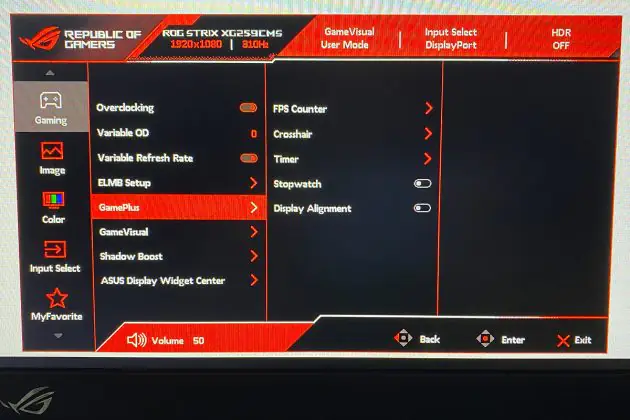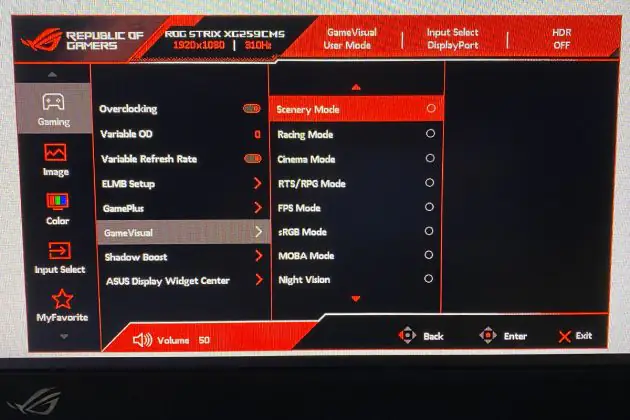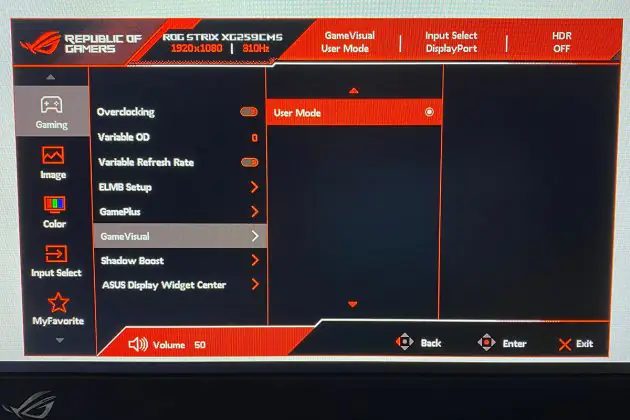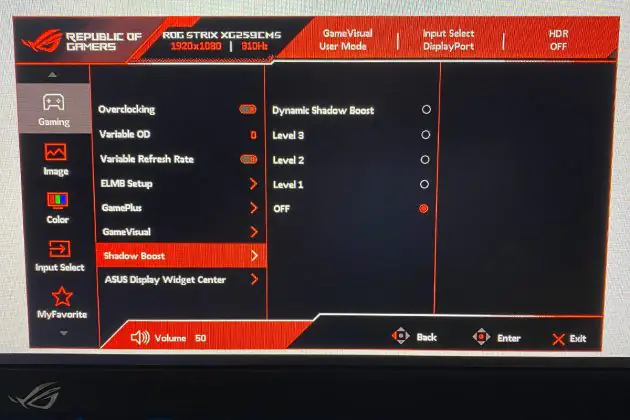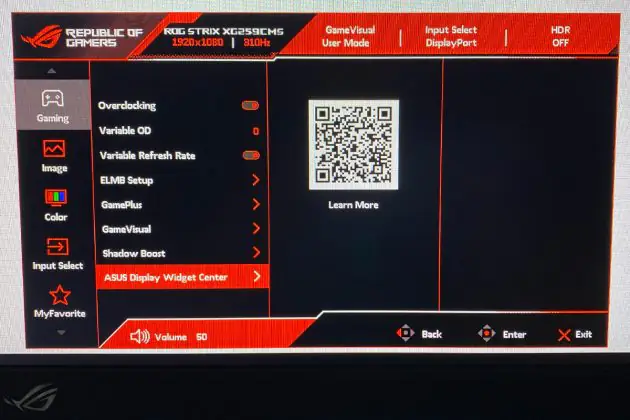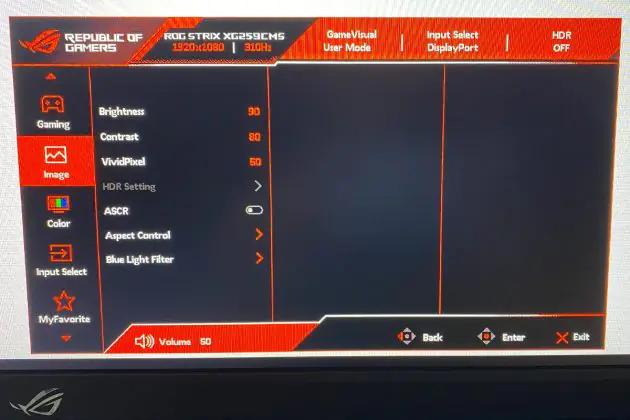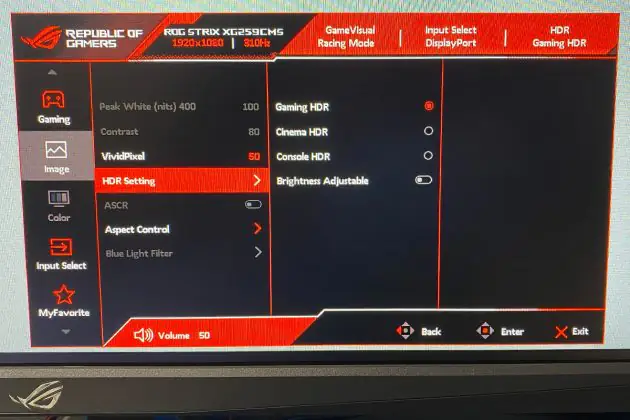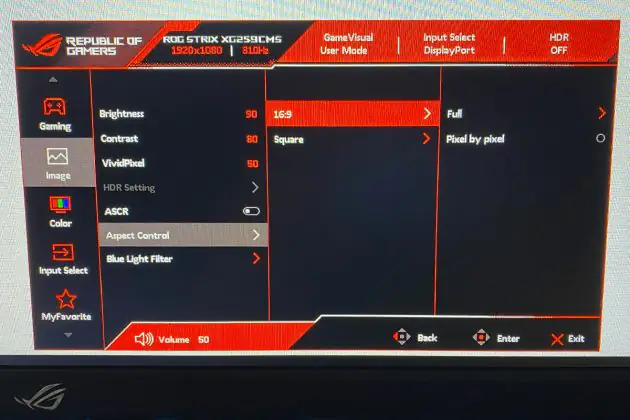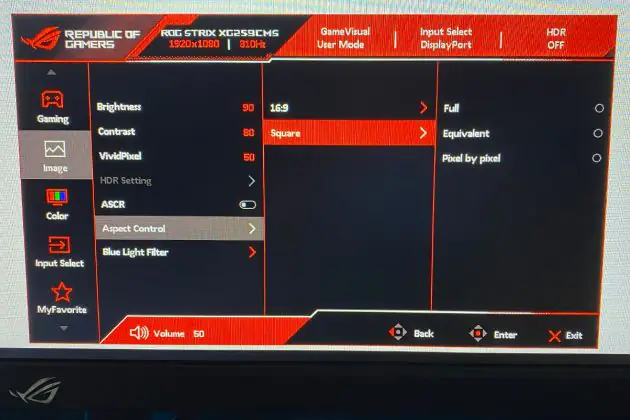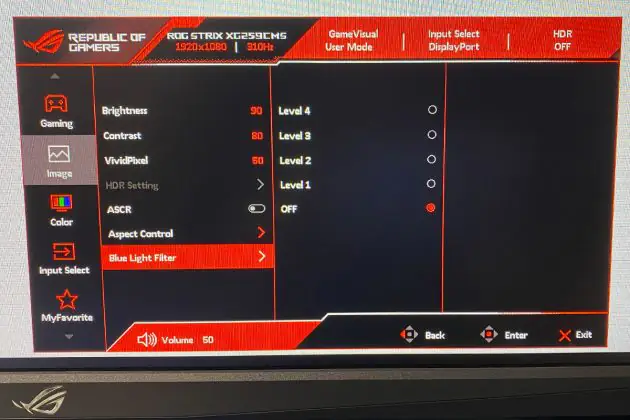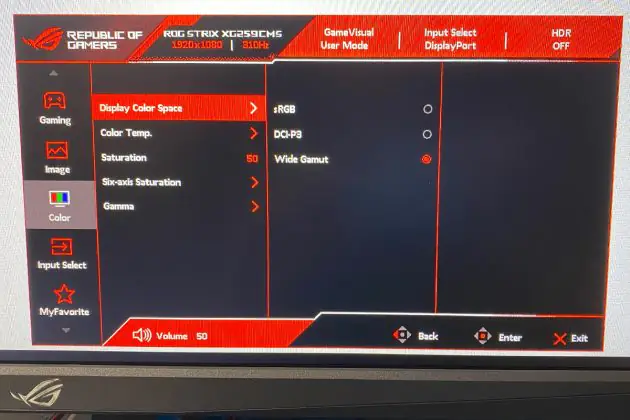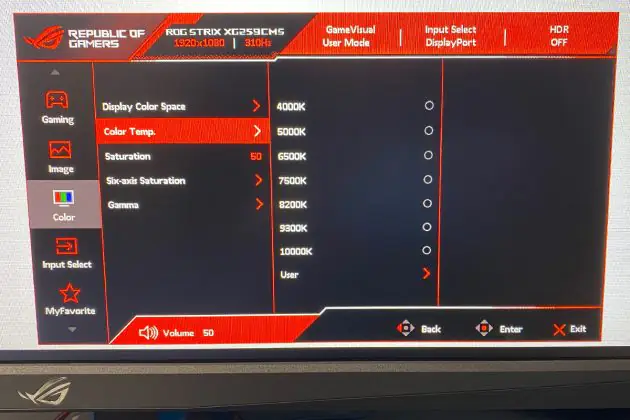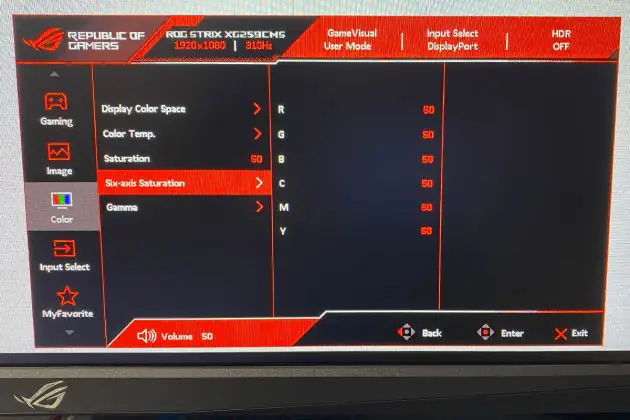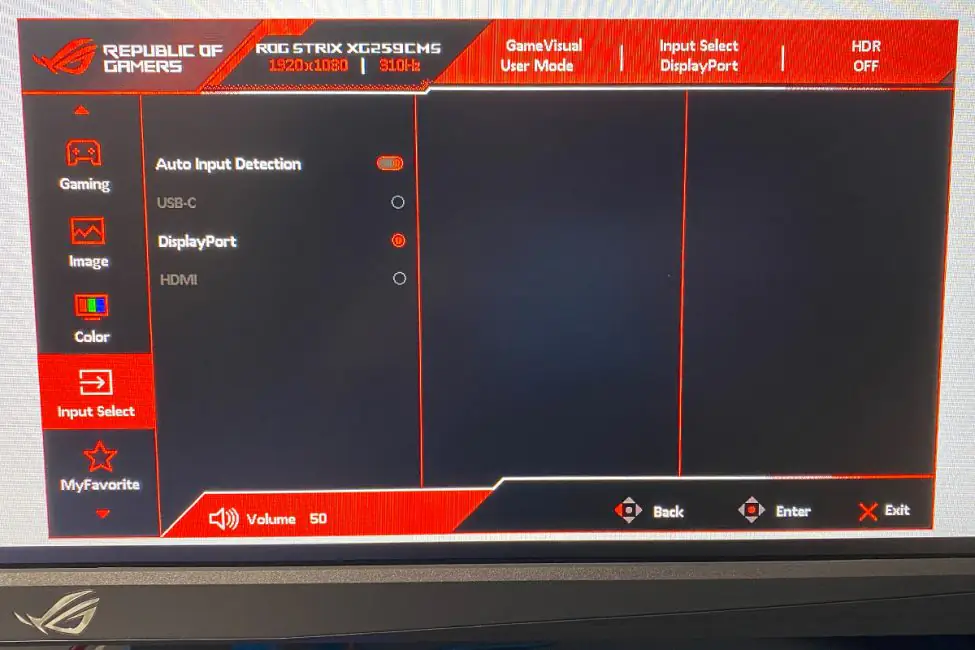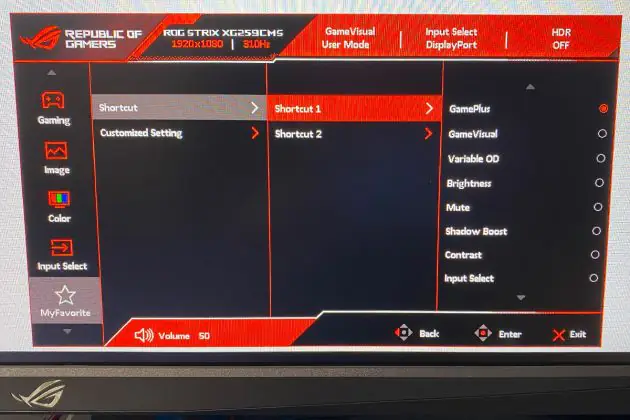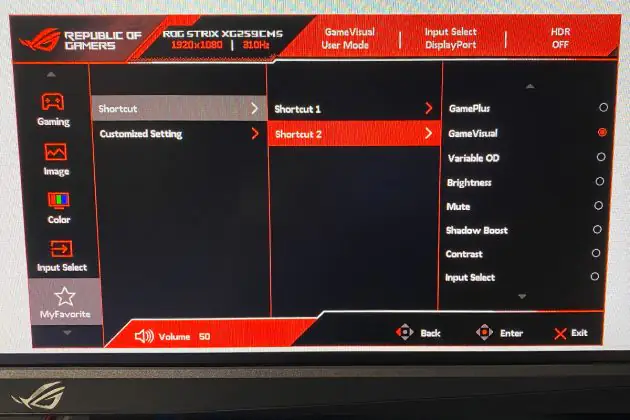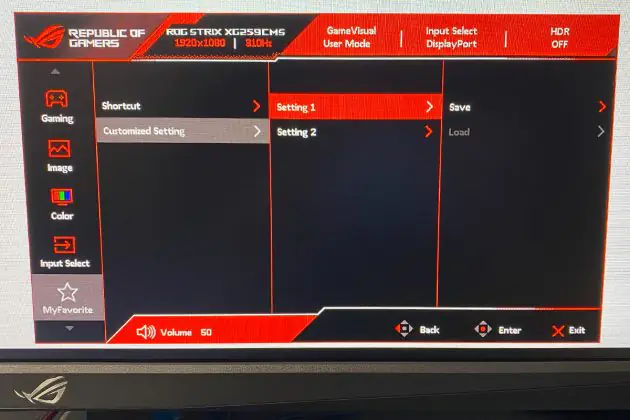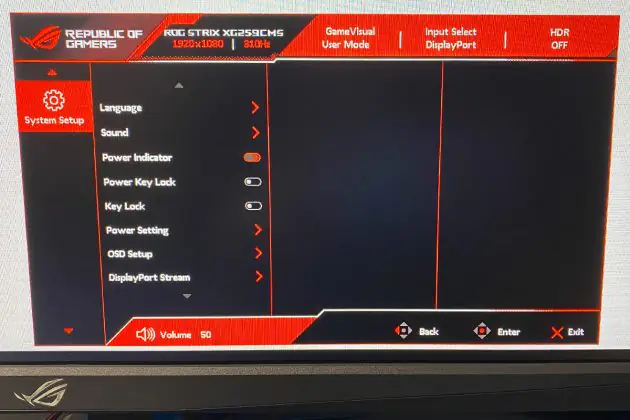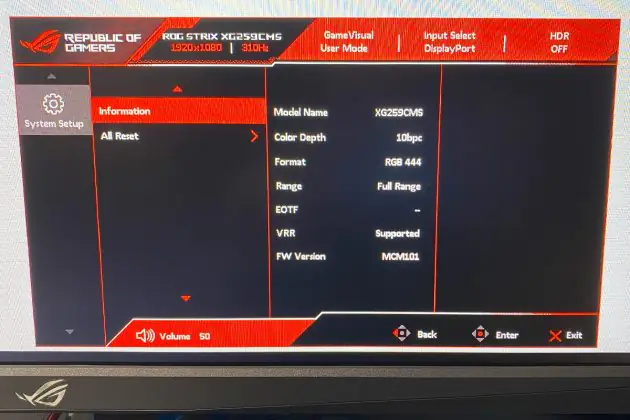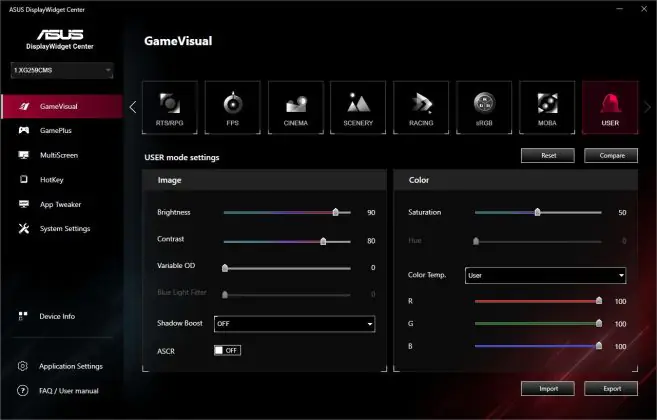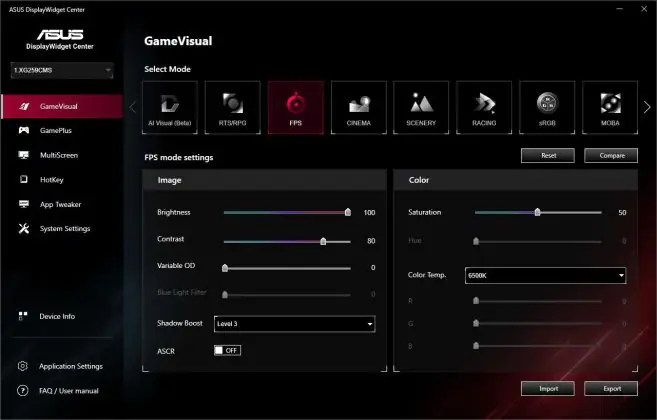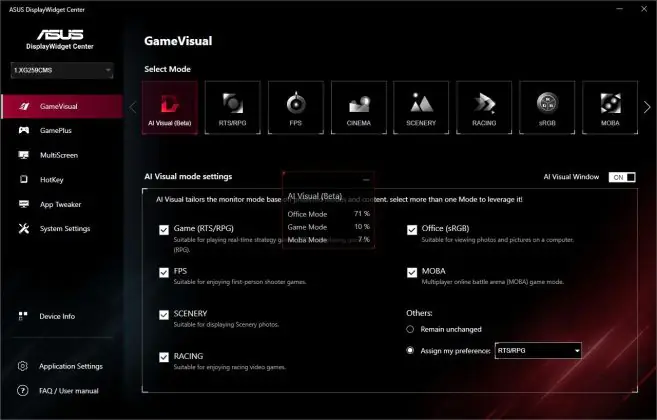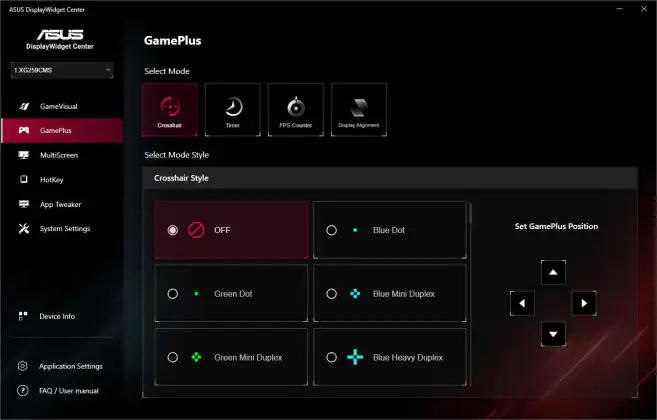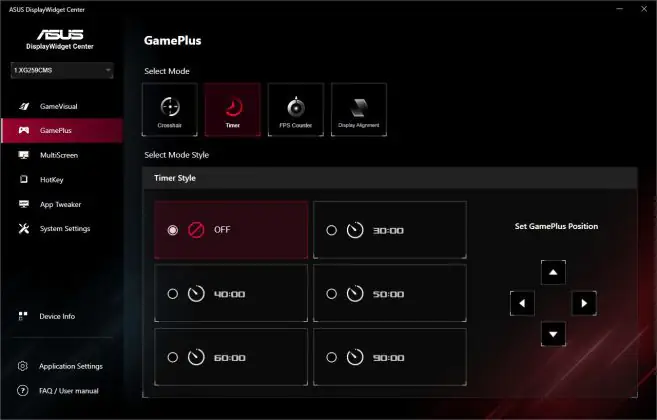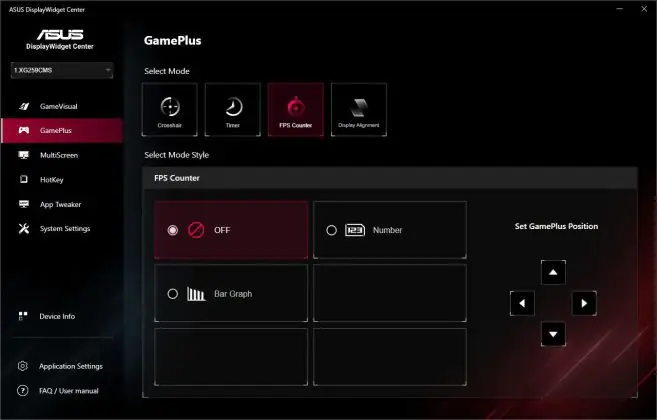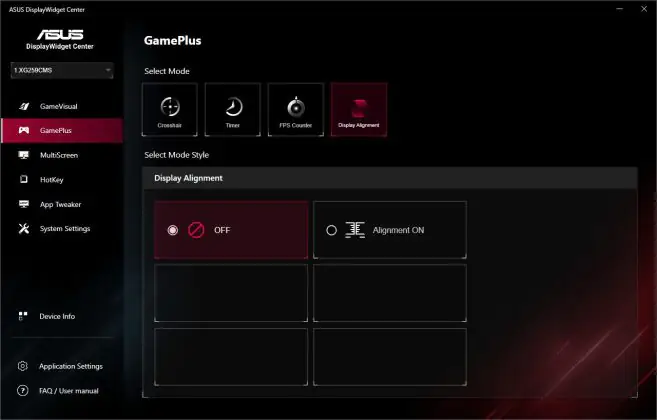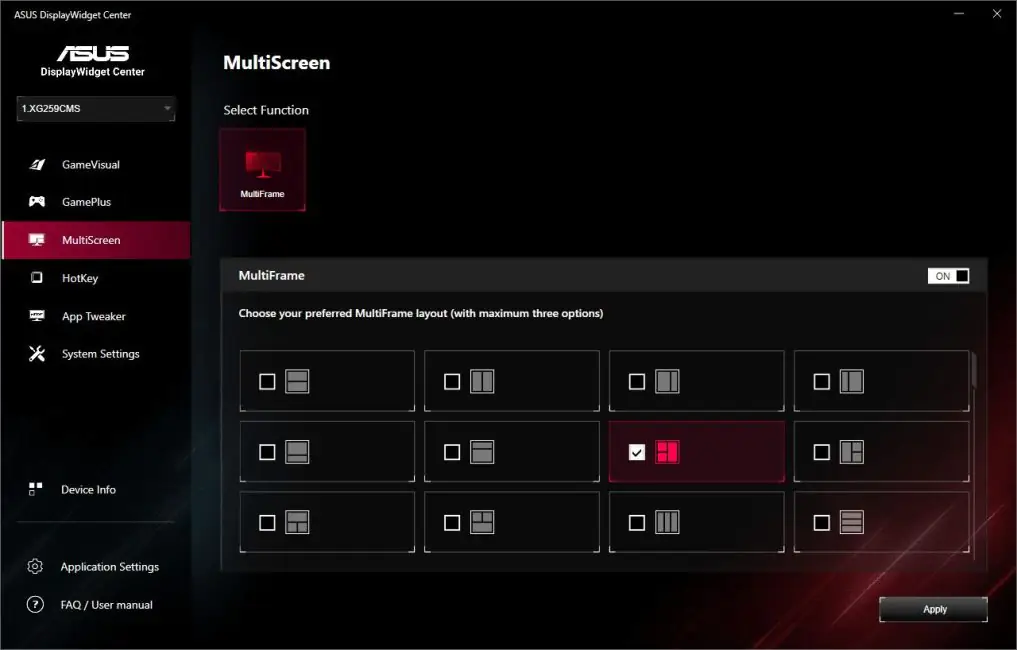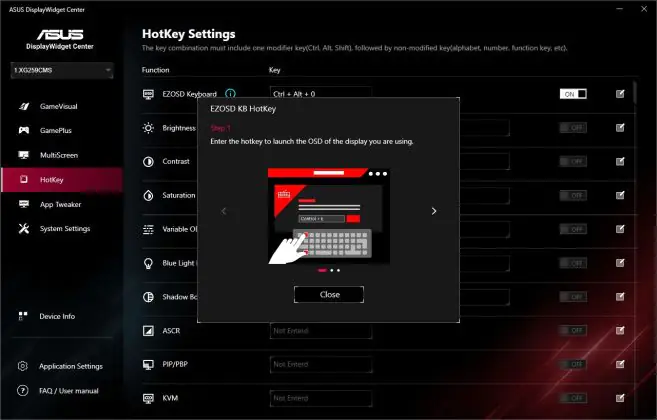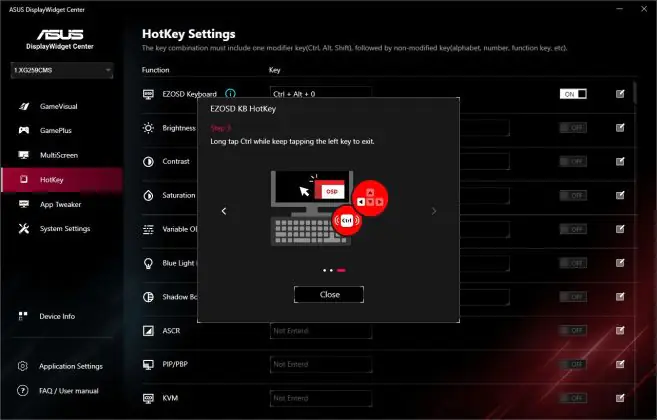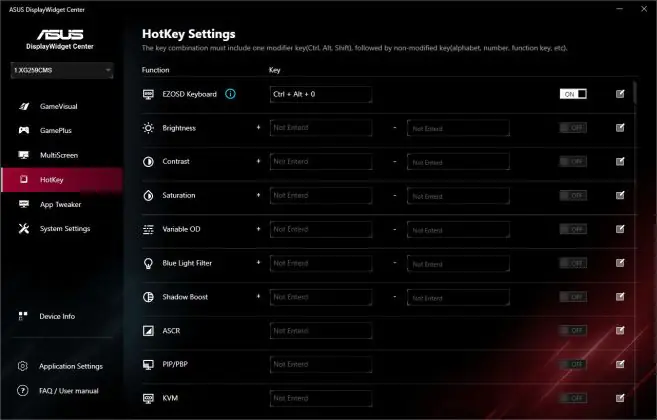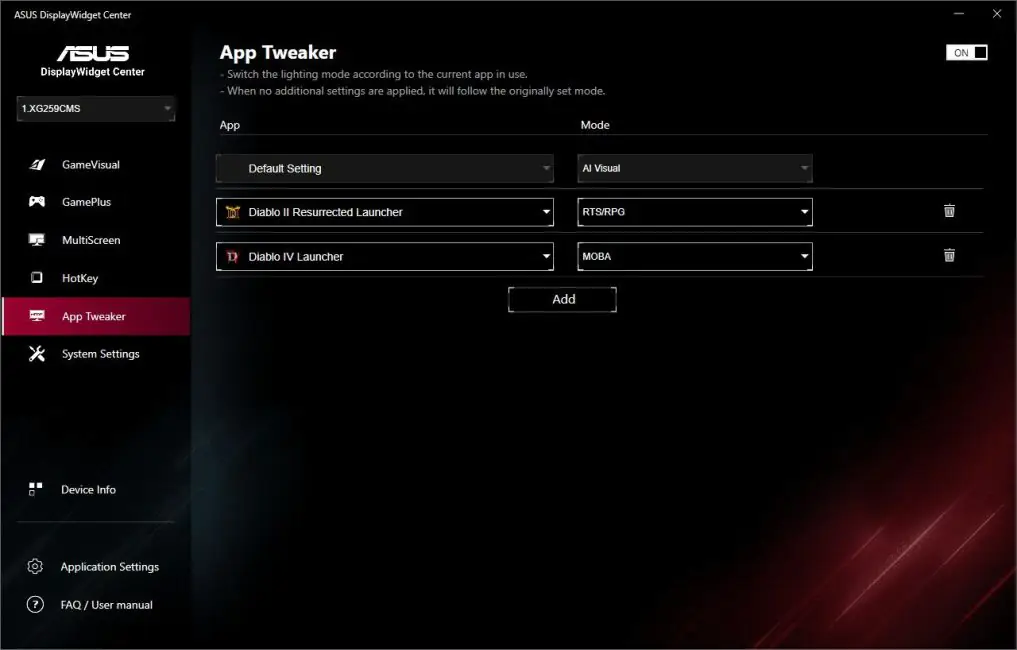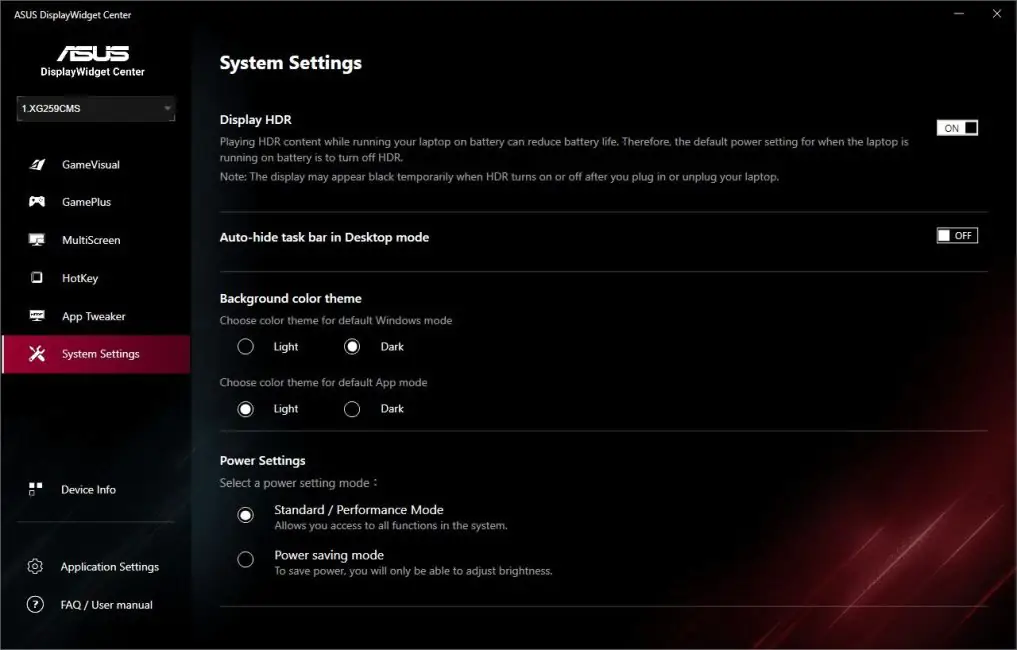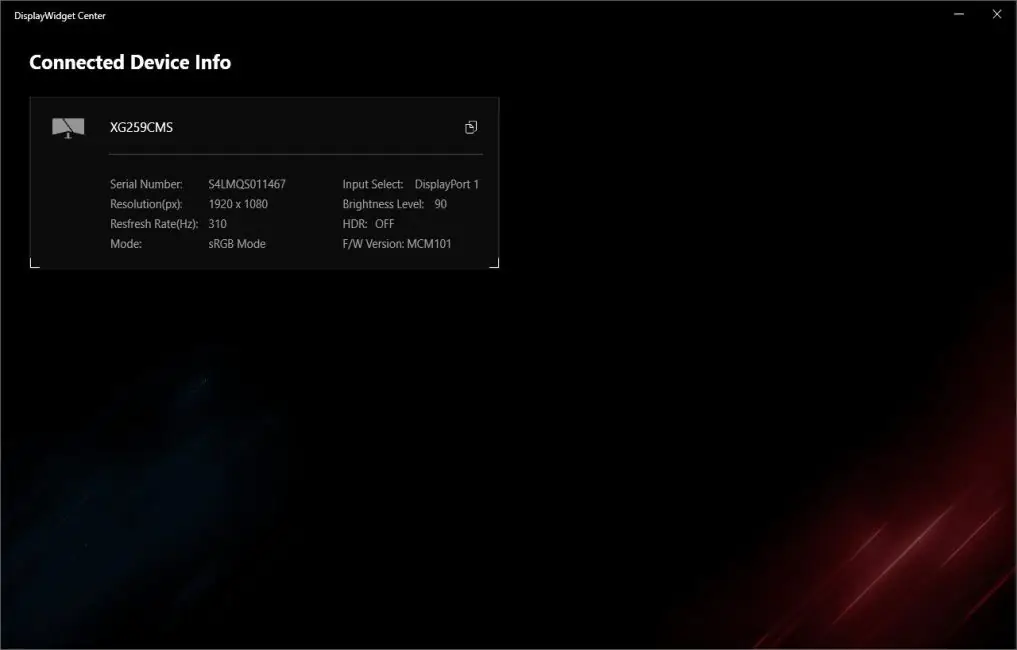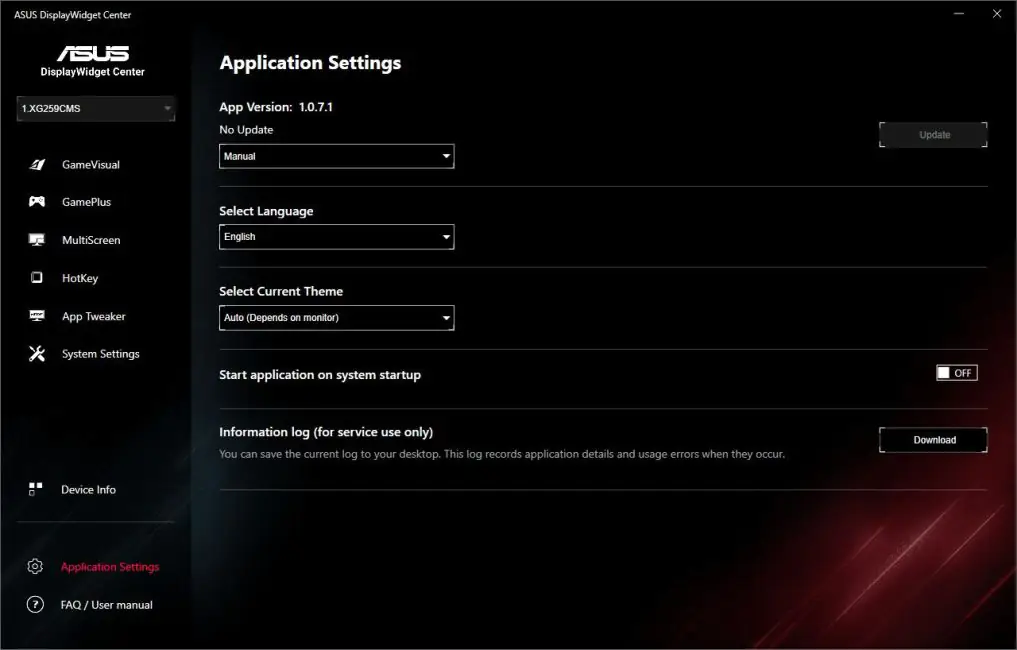© ROOT-NATION.com - Use of content is permitted with a backlink.
Today, I’m reviewing the ROG STRIX XG259CMS, a new gaming monitor from ASUS that expands their lineup this year. After spending some time using it, I can confidently say it’s a solid choice for 1080p gaming within the $359 / €343 price range. Here’s why: it features a 10-bit Fast IPS panel with a 310Hz refresh rate, excellent image clarity, and vibrant color reproduction. The monitor supports HDR, G-SYNC, and AMD FreeSync, and offers a fast 1ms GTG response time. With a brightness of 400 nits and a versatile stand that allows for extensive adjustments, it’s designed to fit a variety of setups. Additionally, the monitor showcases the distinctive ROG STRIX aesthetic, which some may find appealing.
While the initial impression is positive, I’ll break down the details of its performance and features in this review.
Specifications
- Model: ROG Strix XG259CMS
- Diagonal: 24,5″
- Resolution: Full HD (1920×1080)
- Aspect ratio: 16:9
- Matrix type: Fast IPS
- Display surface: matte
- Color space: sRGB 110%.
- Display colors: 16.7 million colors
- Support for HDR: HDR10
- Brightness (typical): 400 cd/m2
- Contrast ratio (standard): 1000:1
- Response time: 1 ms (GTG)
- Refresh rate: 310 Hz
- Pixel pitch: 0.2830 mm
- I/O ports: 1×DisplayPort 1.4; 1×HDMI 2.0; 1×USB-C (DP Alt Mode / Power Delivery 7.5W); 1×3.5 mm audio jack
- Built-in speakers: no
- Tilt adjustment: yes (+20° ~ -5°)
- Horizontal swivel: yes (+45° ~ -45°)
- Vertical rotation: yes (+90° ~ -90°)
- Height adjustment: yes (0~120 mm)
- VESA wall mount: 100×100 mm
- Socket for a tripod: 1/4″
- Kensington lock: yes
- Dimensions with stand (W×H×D): 55.8×49.2×21.8 cm
- Dimensions without stand (W×H×D): 55.8×33.2×5.7 cm
- Package dimensions (W×H×D): 79.5×48.2×17.2 cm
- Weight with stand: 5.58 kg
- Weight without stand: 2.78 kg
- Technologies: Flicker-Free, Trace Free, Low Blue Light, HDCP 2.2, Extreme Low Motion Blur (ELMB), ELMB Sync, GamePlus, GameVisual, Shadow Boost, HDR, Adaptive-Sync
- Certificates and standards: TÜV Flicker-Free, TÜV Low Blue Light, VESA AdaptiveSync Display 310 Hz, VESA DisplayHDR 400, AMD FreeSync Premium, G-SYNC Compatible
- Proprietary software: ASUS DisplayWidget Center
- Package contents: monitor, DisplayPort cable, 65W power supply, adjustable leg with stand, ROG pouch, user manual, warranty documentation, ROG stickers
Positioning and price
The XG259CMS positions itself as one of the most affordable monitors in the ROG STRIX lineup with a refresh rate exceeding 240Hz. Its current average price sits at approximately $353 / €336.
When considering its market placement overall, it stands out as a balanced option. While there are competing models offering a 360Hz refresh rate, they typically come at a higher price point. In my view, the additional 50Hz doesn’t justify the extra cost for most users. This makes the XG259CMS a well-rounded choice when evaluating it through the lens of performance, quality, and price.
Package contents
The monitor comes packaged in a large branded box measuring 79.5×48.2×17.2 cm and weighing around 7.5 kg. The sides of the box feature carrying handles, making it easier to transport the monitor from a store or delivery point despite its size. Inside, the monitor and accessories are securely packed in protective foam, ensuring safe transit and minimizing concerns about potential damage.
In addition to the monitor itself, the package includes:
- DisplayPort cable
- 65 W power supply unit
- adjustable leg with stand
- branded ROG bag
- user manual
- warranty documentation
- ROG branded stickers
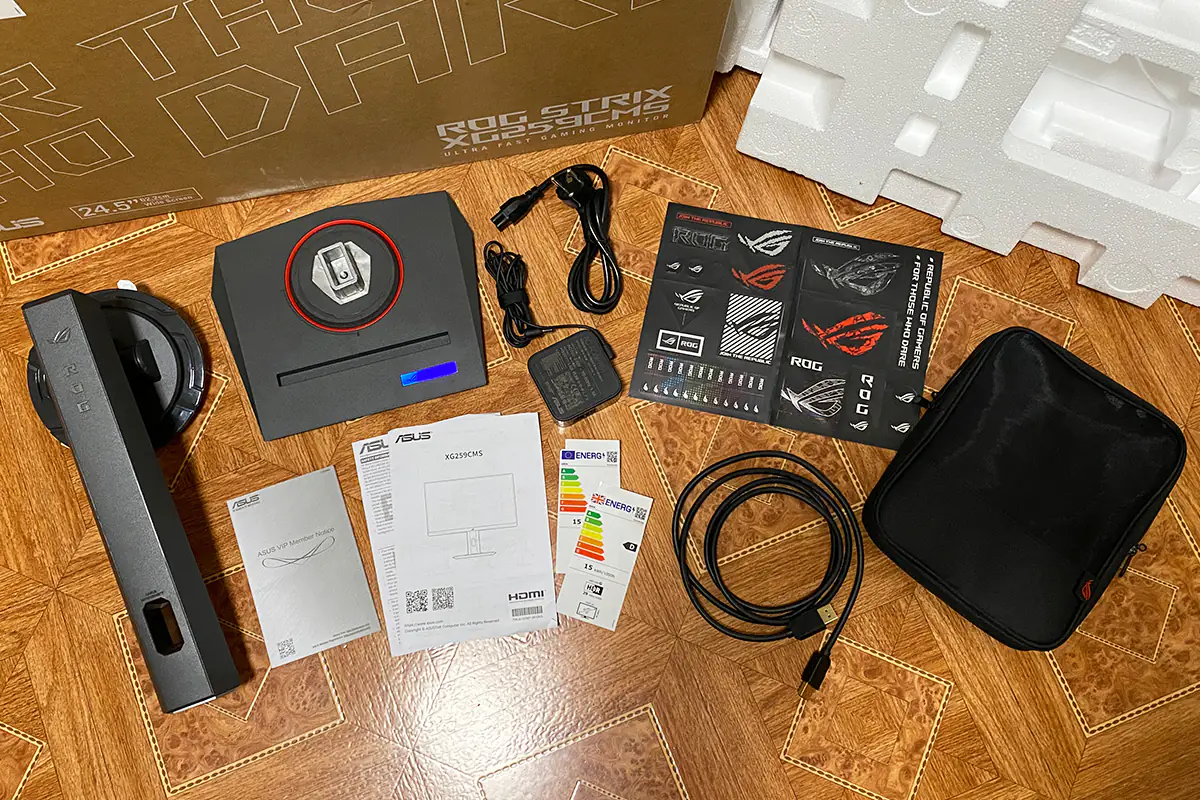
The box includes a branded pouch that holds the DisplayPort cable, power adapter, and documentation with stickers. Interestingly, the pouch itself is quite practical—it can be repurposed for organizing items at home or used as a travel case for small accessories.
The monitor stand is 38 cm long with a sturdy metal base covered in high-quality plastic, featuring ASUS ROG branding. At the top of the stand, there’s a 1/4″ tripod mount, while the lower section includes a simple cable management opening. The stand’s standard mounting system allows for tilt adjustments between +20° and -5°, swivel rotation of +90° to -90° in the vertical plane, and height adjustment up to 120 mm.
Instead of the typical V-shaped support, the ROG STRIX XG259CMS features a stylish base. The stand attachment is rotatable, allowing horizontal adjustments of +45° to -45°. The base also includes the iconic REPUBLIC OF GAMERS logo, which shimmers depending on the angle and lighting. Additionally, ASUS has incorporated a practical groove in the base, designed to hold a smartphone.
Assembling the monitor is straightforward and can literally be done with one hand. I always recommend assembling it directly within the protective foam packaging to minimize the risk of leaving fingerprints on the screen, which can be difficult to clean later.
To assemble, simply insert the stand into the slots on the back of the monitor and press gently—the clips will automatically lock into place. Then, attach the base to the stand using the included screws, which can be tightened by hand without the need for tools. That’s it—the monitor is ready to go. You can place it on your desk and remove the foam, or lift the entire assembled unit by the stand. The complete setup weighs just 5.58 kg. Below, I’ve included a short clip demonstrating the assembly process.
If you ever need to detach the monitor from the stand, simply press the release mechanism on the back, and the clips will unlock the stand effortlessly.

Read also:
Design, ergonomics, build quality
The monitor features the distinctive and recognizable ROG STRIX design, evident in every detail: the hexagonal shape of the stand, the red line on the base, ROG logos everywhere, intricate patterns, a textured back panel, and the brand’s signature slogan “FOR THOSE WHO DARE.” It’s stylish, unique, and instantly recognizable. In terms of design, it certainly earns a solid 10.
The monitor is relatively compact. While not as small as the TUF Gaming VG259Q3A that I recently reviewed, it still doesn’t take up much space and should fit into any workspace without issue. The screen size is 24.5 inches. With the stand, the overall dimensions are 55.8×49.2×21.8 cm. Without the stand, the dimensions are 55.8×33.2×5.7 cm. The total weight of the monitor with the stand is 5.58 kg, while the monitor alone weighs just 2.78 kg.
I’ve already covered the adjustment options in the previous section. The monitor can be tilted, rotated, raised, and lowered in various ways. If needed, it can also be mounted on a bracket, as it has a standard VESA 100×100 mm mounting pattern on the back. In fact, any VESA-compatible mount will work, even the more affordable ones, since the monitor isn’t particularly heavy.
The front of the monitor is mostly occupied by the 24.5-inch display. The screen has a matte finish to reduce reflections and glare from sunlight or other light sources. At the bottom, you’ll find the ROG logo. The bezels are standard, with a 2 mm frame and a 4 mm matrix bezel.
The back of the monitor, as mentioned earlier, follows the typical gaming ROG style. On the right side, there is a large ROG logo. In the lower-right corner, you’ll find a Kensington lock. On the left, there are decorative lines, branding, a five-position joystick, and the menu control buttons.
All the connectivity ports are located at the bottom center of the monitor: the DCIN power input, HDMI 2.0, DisplayPort 1.4, TYPE-C (DP Alt Mode / Power Delivery 7.5W), and a standard 3.5mm audio jack for headphones. It’s worth noting that the monitor does not have built-in speakers.
The build quality is solid: the matte plastic feels durable, there are no creaks, and all components are neatly aligned. The stand holds the monitor securely, and all adjustments are easy to make. In terms of ergonomics, it’s excellent as well: the monitor doesn’t take up much space, it’s easy to adjust to your preferred position, and there’s basic cable management. Overall, it’s top-notch; there’s really not much more to add.
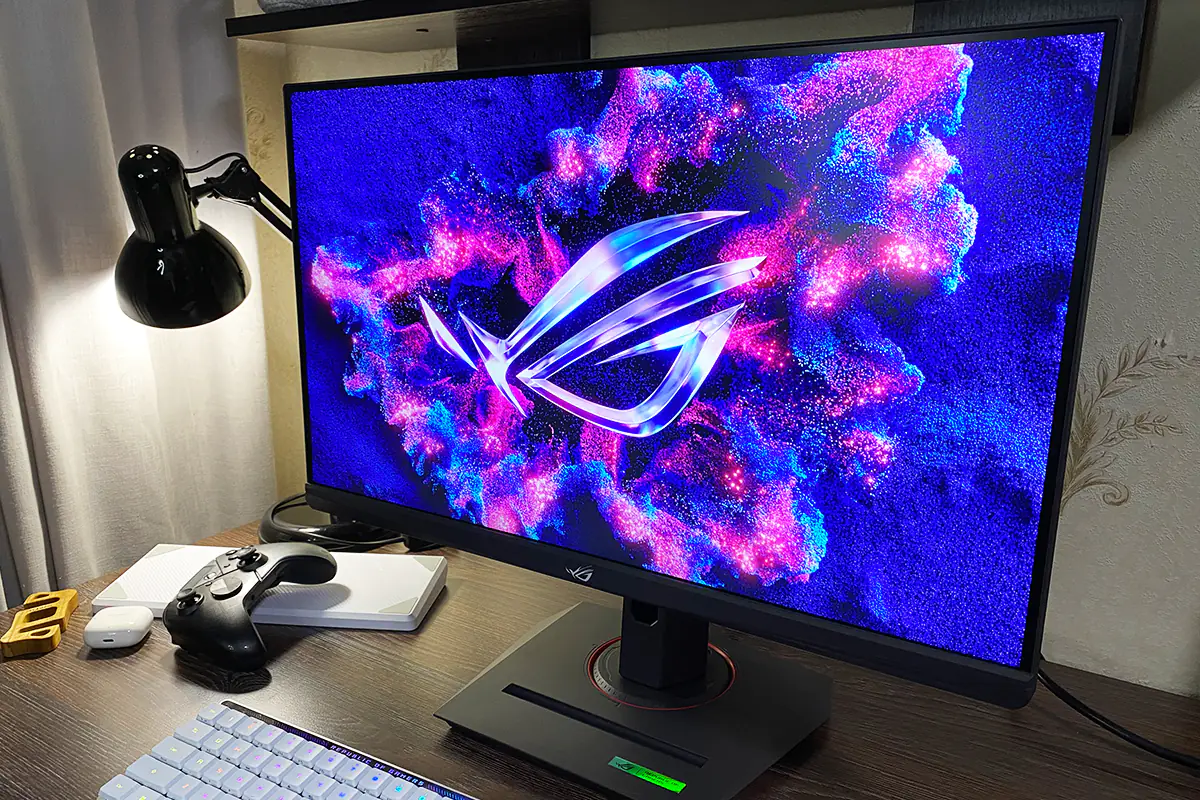
Read also:
- ASUS ProArt PA278CFRV Professional Monitor Review
- ASUS ROG NUC 970 Mini-PC Review: Power in Compact Form
Display, features and technology
The ASUS ROG STRIX XG259CMS features a 10-bit Fast IPS panel with a Full HD (1920×1080) resolution and a maximum refresh rate of 310Hz. It’s important to note that the 310Hz refresh rate is available only when overclocking the monitor. Without overclocking, connected via DisplayPort, the monitor runs at 300Hz, which is still quite good. As for other specifications, the monitor offers a solid set of features for gaming: a 1ms (GTG) response time, a brightness of 400 nits, a 1000:1 contrast ratio, 110% sRGB color gamut, and a pixel pitch of 0.2830mm. It also supports HDR and G-SYNC / AMD FreeSync.

In addition to the main features, the monitor offers a variety of functions designed to enhance the image quality, gaming experience, and reduce eye strain: Flicker-Free, Trace Free, ELMB, GamePlus, GameVisual, Shadow Boost, and Blue Light Filter.
Flicker-Free minimizes screen flicker, reducing eye strain. Trace Free lowers the response time of the display. ELMB (Extreme Low Motion Blur) reduces motion blur in fast-moving scenes. GamePlus provides various built-in features like on-screen crosshairs, timers, and counters. GameVisual offers a selection of 8 preset display modes that can be switched on the fly and further customized through the DisplayWidget Center app. Shadow Boost improves visibility in dark areas without affecting bright sections. The Blue Light Filter reduces blue light exposure to lessen eye strain. Additionally, ASUS notes that all ROG STRIX XG259CMS monitors undergo factory calibration for more accurate color reproduction.
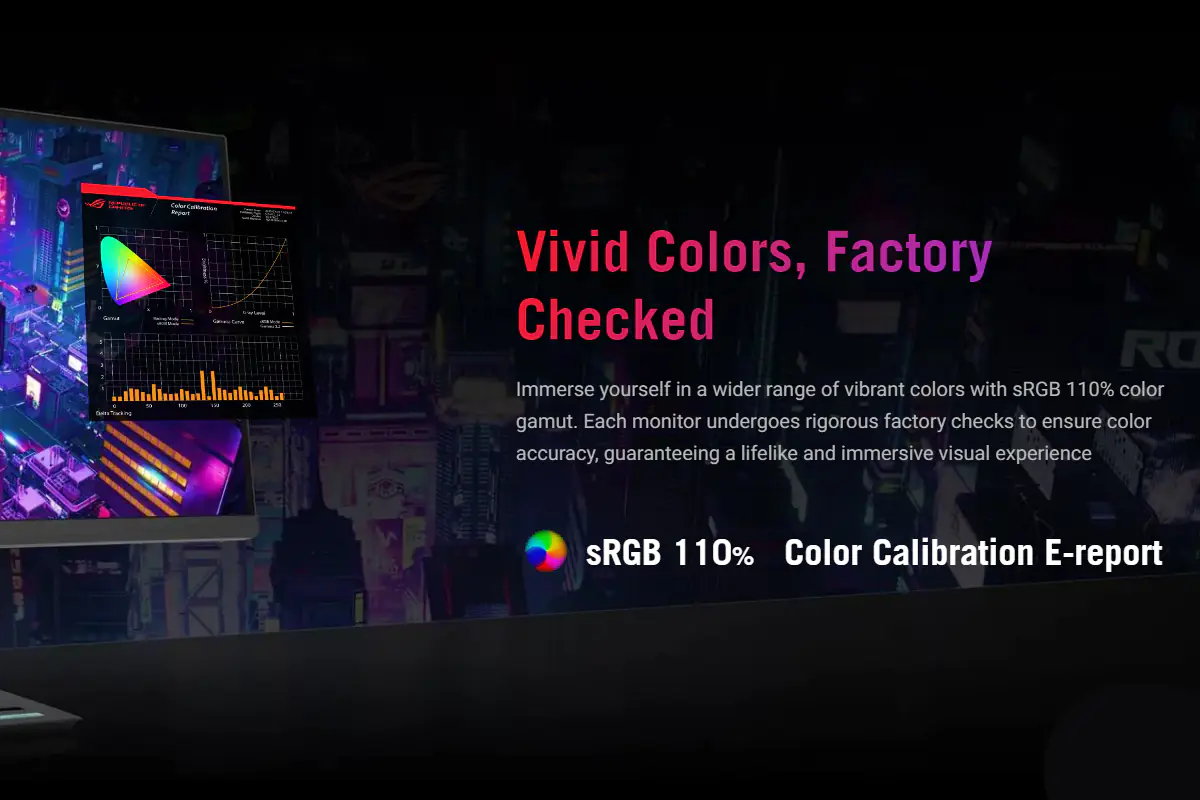
The image quality of the ROG STRIX XG259CMS honestly impressed me. The monitor delivers a sharp picture with vibrant and rich colors. The blacks are deep, and the contrast and brightness are good. While it doesn’t quite reach the level of top-tier VA or OLED panels, it’s also significantly more affordable. For a mid-range IPS panel, however, the display offers a very solid image, and I was genuinely impressed by its performance.
The viewing angles are wide. The image on the display remains clear from any angle, with minimal changes in brightness, contrast, or colors.
The response time of the monitor is excellent, which is particularly noticeable during fast-paced games. Playing shooters on this monitor is a real pleasure, with no blurring, smearing, or ghosting. Additionally, built-in tests from TFT Monitor Test showed an average response time of 3ms at a 310Hz refresh rate.
Regarding backlight bleed, the monitor I tested does exhibit some. The most noticeable spot is in the lower-left corner. However, it’s important to note that under typical usage, this is not visible at all, only appearing in very dark scenes and even then, only at certain angles.

In summary, I can only briefly reiterate: the picture quality of the monitor is truly impressive, and this becomes very noticeable when switching to the ROG STRIX XG259CMS from a more budget-friendly display. For example, when S.T.A.L.K.E.R. 2 was released, after a brief test, I realized that my 4060 Ti couldn’t handle the game at 5120×1440 resolution on my primary monitor. Of course, I could have lowered the settings and locked the FPS, but that solution didn’t appeal to me. On another 2K monitor, things were a bit better, but it was still nearly impossible to play due to frequent stuttering, with FPS dropping from 90-70 to 3-5 frames. It’s great that after the review, I still had (or rather, I didn’t manage to send it back) the ASUS TUF Gaming VG259Q3A monitor with a 1080p resolution. Without much thought, I switched to this monitor. Yes, it was to properly play S.T.A.L.K.E.R. 2. The stuttering didn’t completely disappear, but it was significantly reduced, making the gameplay much more enjoyable. Plus, I could now comfortably raise the graphics settings to high. I spent around 100+ hours on this monitor and nearly finished the game. Then, when the ASUS ROG STRIX XG259CMS arrived for review, I happily continued playing the game on it. So, all of this to say, the difference in image quality between the budget TUF Gaming VG259Q3A and the ROG STRIX XG259CMS is honestly huge. Faster matrix, sharper overall picture, more vivid colors, better brightness and contrast. It’s a shame the monitor didn’t arrive sooner.
As for other games, the ROG STRIX XG259CMS also impresses. Playing Battlefield 2042 on this fast monitor is a real pleasure. For CS games, I think the XG259CMS is an excellent choice as well. By the way, while checking the prices of this monitor in stores, I decided to also read reviews to see what people are saying about it. Based on the reviews, it seems many people buy this monitor specifically for CS.
Read also:
Navigation through the built-in menu is done using the 5-way joystick located at the back of the monitor (on the right side when the screen is facing you). Some menu options can also be accessed using quick buttons. The menu itself is quite standard for ASUS monitors, similar to what we’ve seen in models like the VG259Q3A and VG34VQL3A. All monitor settings are divided into six main categories: Games, Image, Color, Input Source, MyFavorite (Favorites), and System Settings.
In the “Games” menu, you can activate the matrix overclocking, adjust the level of Variable Overdrive, enable VRR (which includes G-Sync / FreeSync), turn on ELMB (Extreme Low Motion Blur), display various counters/timers/crosshairs in GamePlus, select a display mode in GameVisual, and activate Shadow Boost. Additionally, you’ll find a QR code linking to the official ASUS website, where you can download Display Widget Center for further monitor customization.
In the “Image” menu, you can adjust the brightness, contrast, sharpness, enable ASCR (dynamic contrast), and activate the blue light filter, as well as adjust the screen format. HDR settings are also found here, but to make them active, you need to enable HDR in Windows itself.
In the “Color” menu, you can choose the color gamut and mode, adjust the color saturation, and fine-tune the gamma settings.
In the “Source Selection” menu, you can manually choose the input signal source for the display, or leave it set to auto-detection mode.
In the “MyFavorite” menu, you can assign specific menus to the quick-access buttons. By default, GamePlus and GameVisual are selected here. Additionally, you can save your custom settings and easily load them when needed.
In the “System Settings” menu, you can change the language of the menu, adjust the volume of headphones or speakers connected to the monitor, enable the Kensington lock function, block certain buttons, modify the menu appearance, choose the DisplayPort version, view system information about the monitor, and perform a full factory reset.
Read also:
- ASUS ZenScreen MB229CF Portable Monitor Review
- Review of the ASUS Zenbook S 14 UX5406SA with Intel Core Ultra 7 258V
Proprietary software
The monitor can also be adjusted using the proprietary ASUS DisplayWidget Center application. This app provides access to some features that are not available in the monitor’s built-in menu, so let’s take a closer look at it.
In the “GameVisual” menu, you can further customize each display mode. Additionally, there’s an AI Visual function, which automatically recognizes what the monitor is displaying at the time and selects the appropriate mode for it.
In the “GamePlus” menu, you can find various counters, metrics, timers, and virtual crosshairs. Essentially, this is the same as what is available in the monitor’s built-in menu.
In the “MultiScreen” menu, you can split the monitor into several independent work areas. This feature is not available in the monitor’s built-in menu.
In the “HotKey” menu, you can assign hotkeys to specific monitor settings. For example, you can adjust brightness, sharpness, and contrast directly from the keyboard. You can also enable the feature to call up and navigate through the built-in monitor menu using the keyboard.
In the “App Tweaker” menu, you can select specific applications and assign them individual display modes. When the chosen application is launched, the monitor will automatically switch to the selected mode.
In the “System Settings” menu, you can enable HDR, hide the taskbar, switch between Windows themes, and change power modes.
In the “Device Info” menu, you can view the serial number, firmware version, and current settings of the monitor.
In the “Application Settings” menu, you can change the application’s language, set the update mode, enable automatic startup of the application, and download the service information log. Additionally, by clicking on “FAQ / User Manual,” the application will redirect you to the official ASUS website with the user manual.
Conclusions
In conclusion, I can only repeat what I said at the very beginning of the review: the ASUS ROG STRIX XG259CMS is an excellent monitor for 1080p gaming in the price range of $359 / €343. It offers fast response time, clear picture quality, excellent color reproduction, 310 Hz refresh rate, great contrast and brightness, HDR support, G-SYNC / AMD FreeSync, and the ability to adjust the monitor (tilt, height, rotation). As a bonus, it also features the stylish ROG design and various image-enhancing features, such as Shadow Boost and ELMB. For these reasons, this monitor can be confidently recommended to everyone: for gaming, work, studying, casual gamers, beginners, experienced eSports players, and especially for CS enthusiasts.
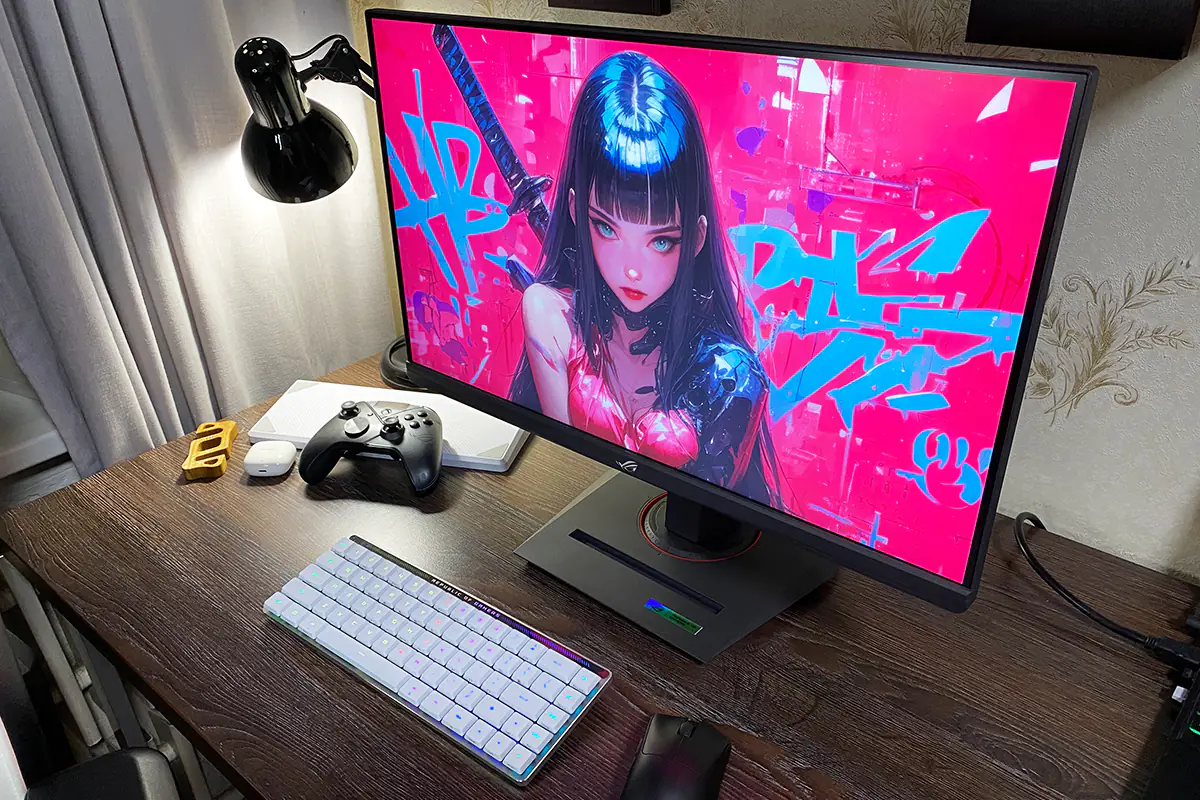
Read also:
- What to Choose: Old Gaming Laptop or New Ultrabook? A Look at ASUS Zenbook S 16
- Samsung Galaxy Ring Review
- BLUETTI AC200L vs OUKITEL P2001 Plus: comparison of portable power stations



